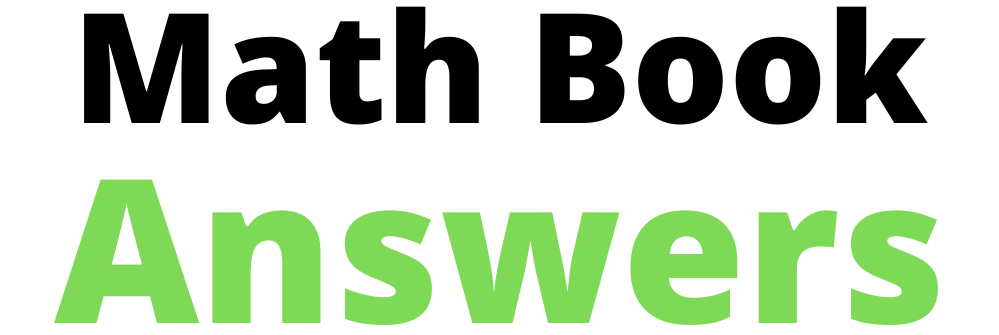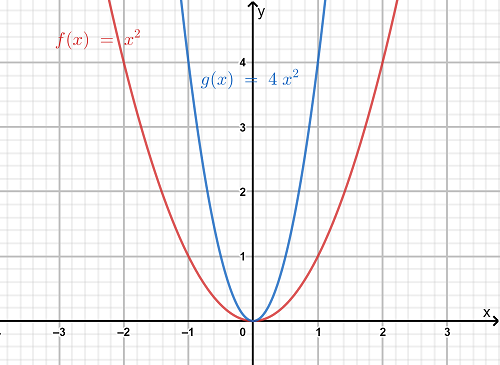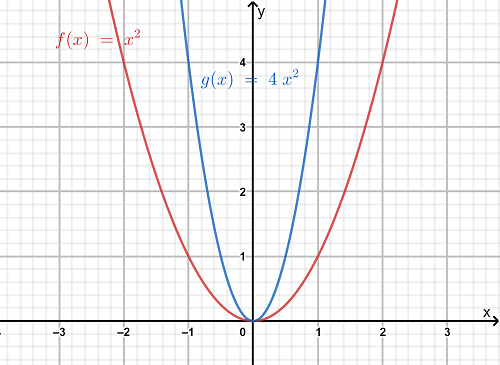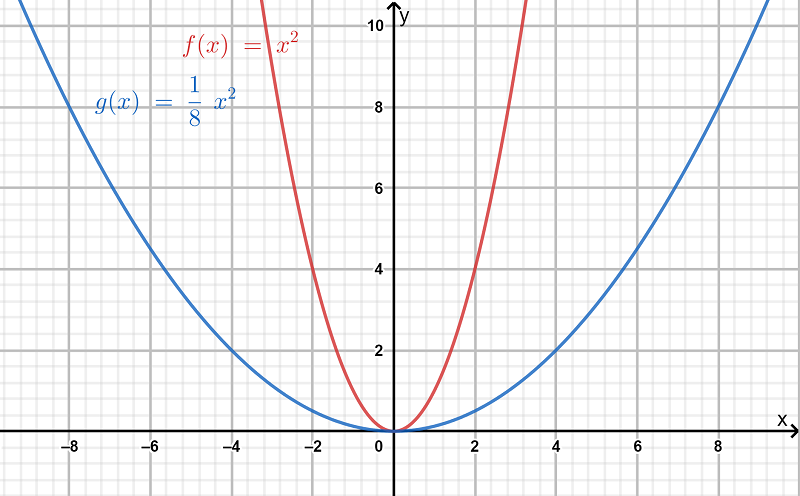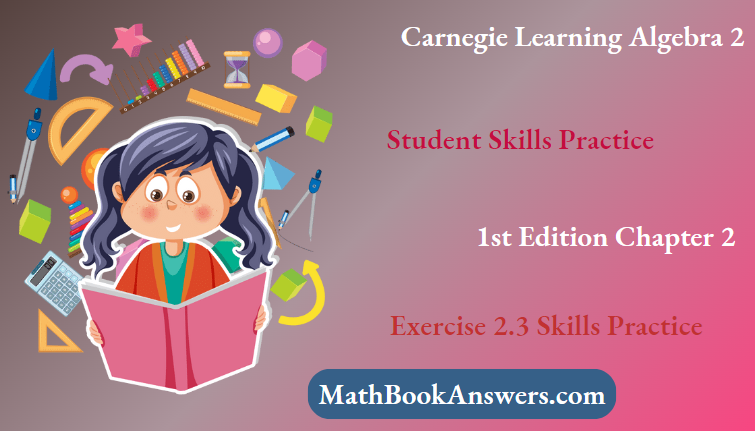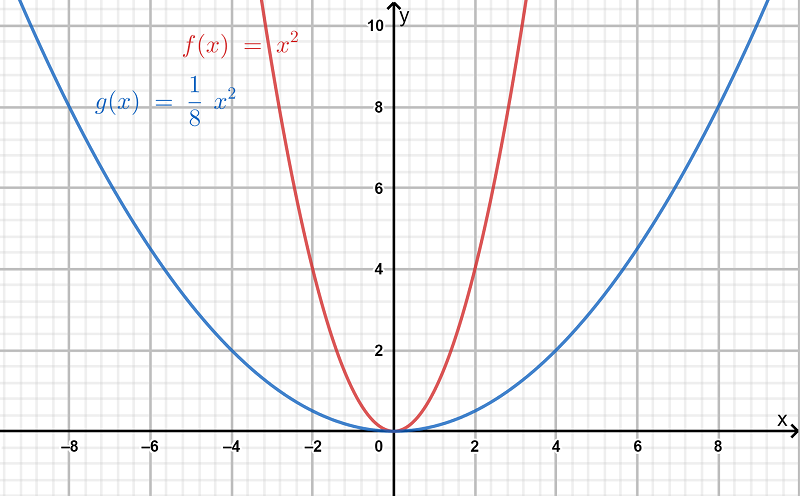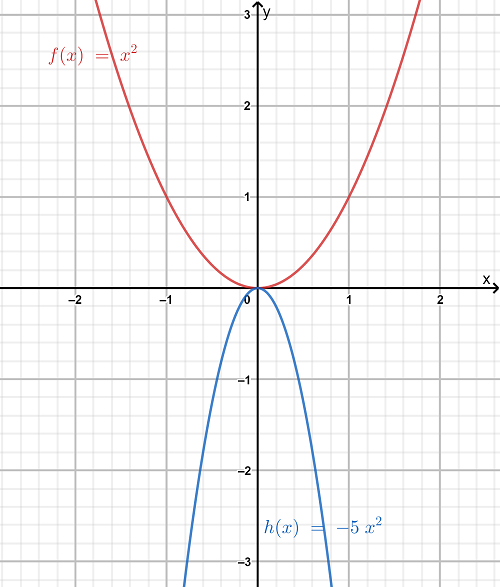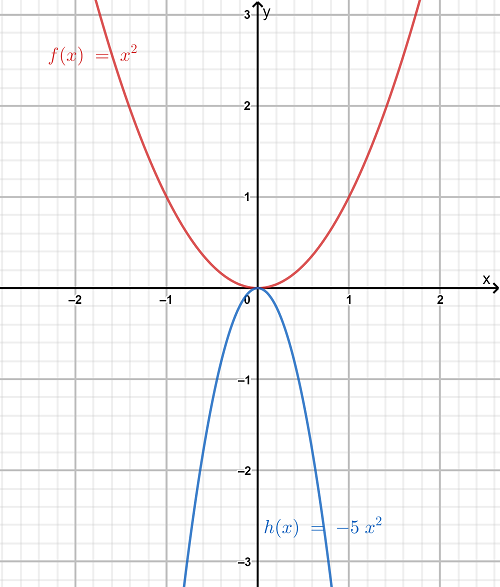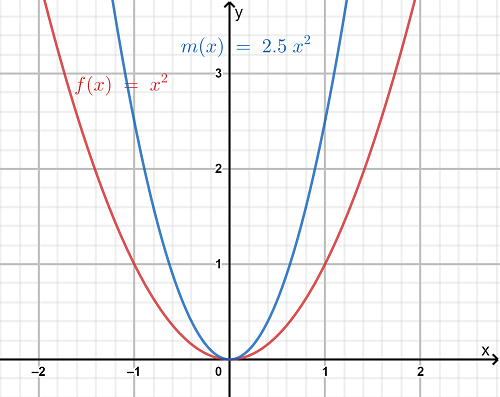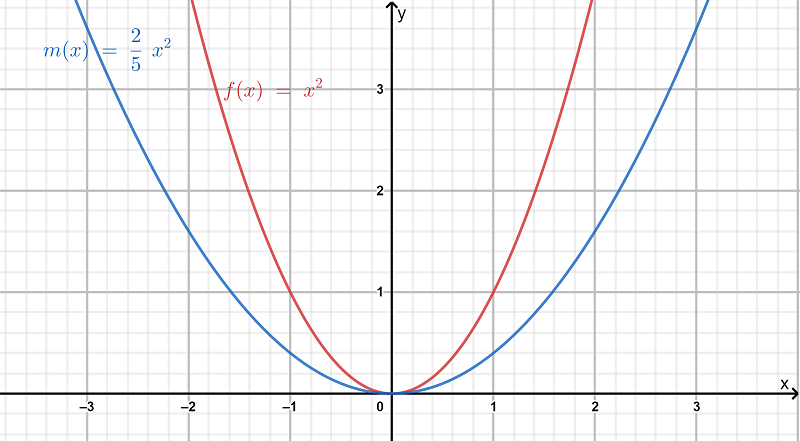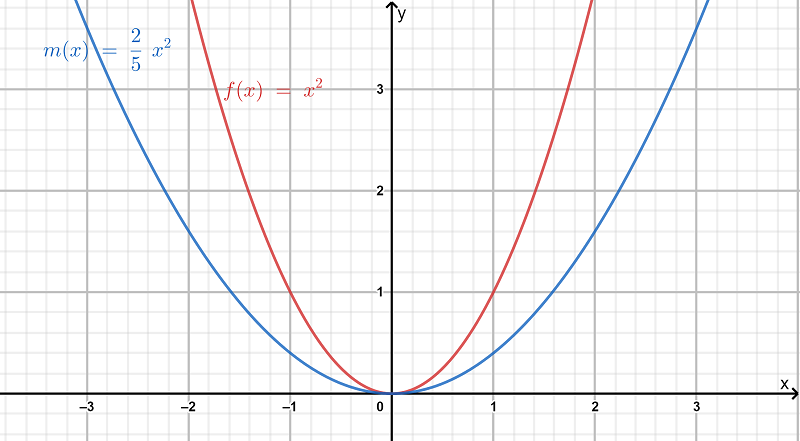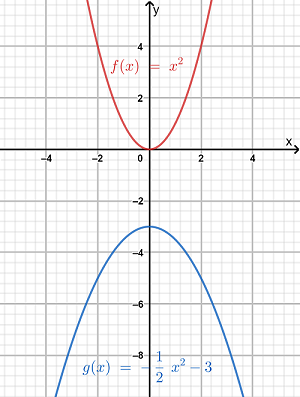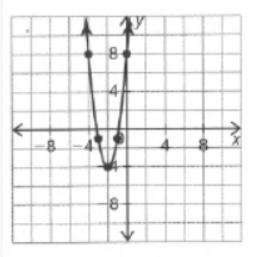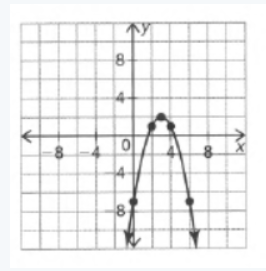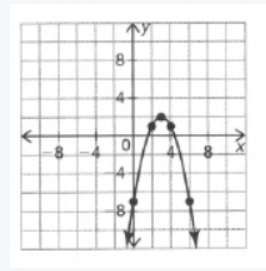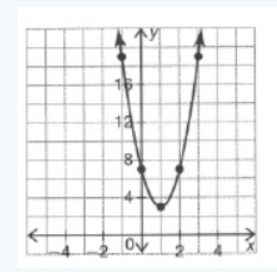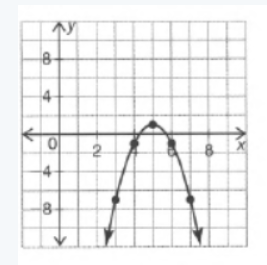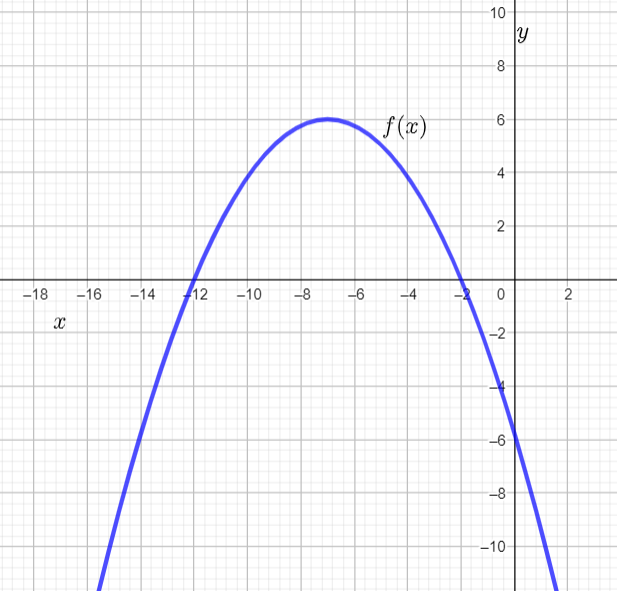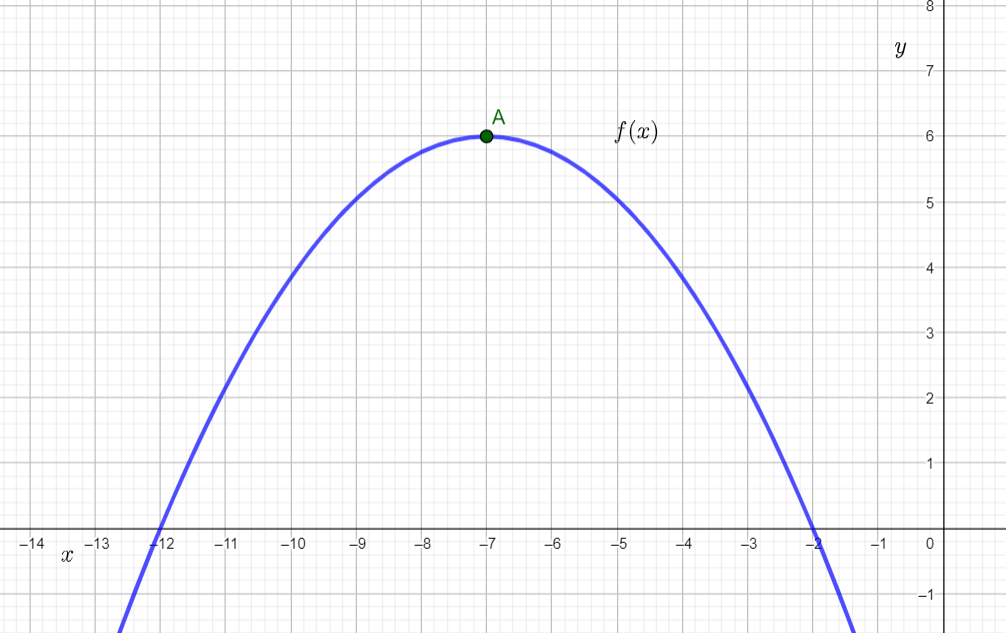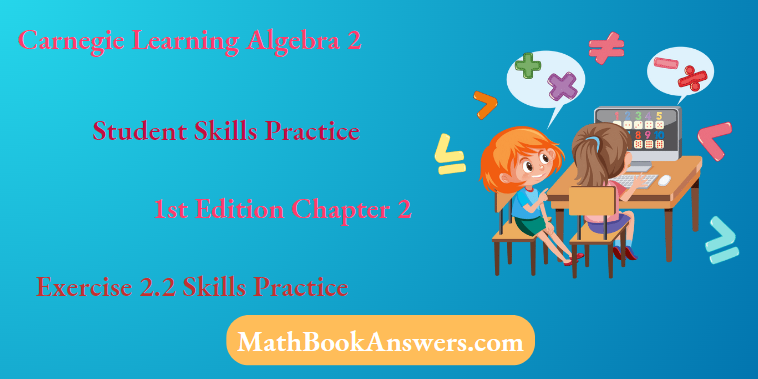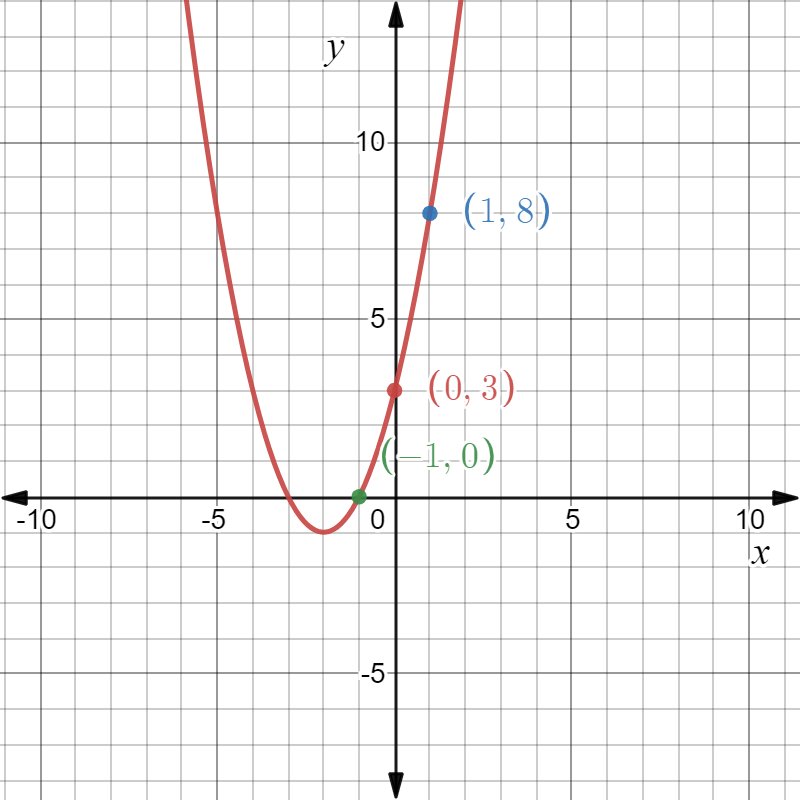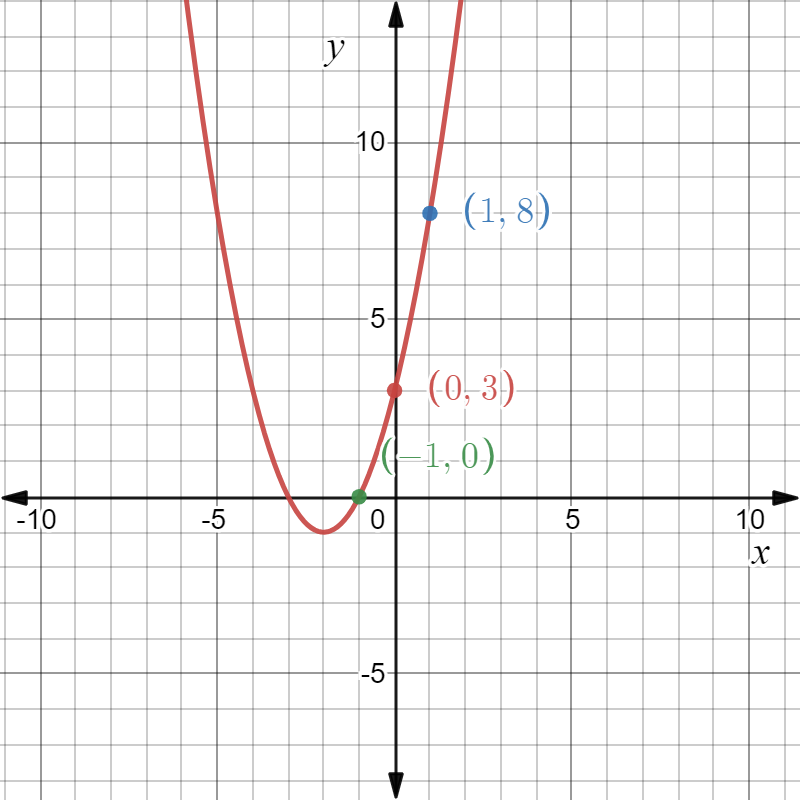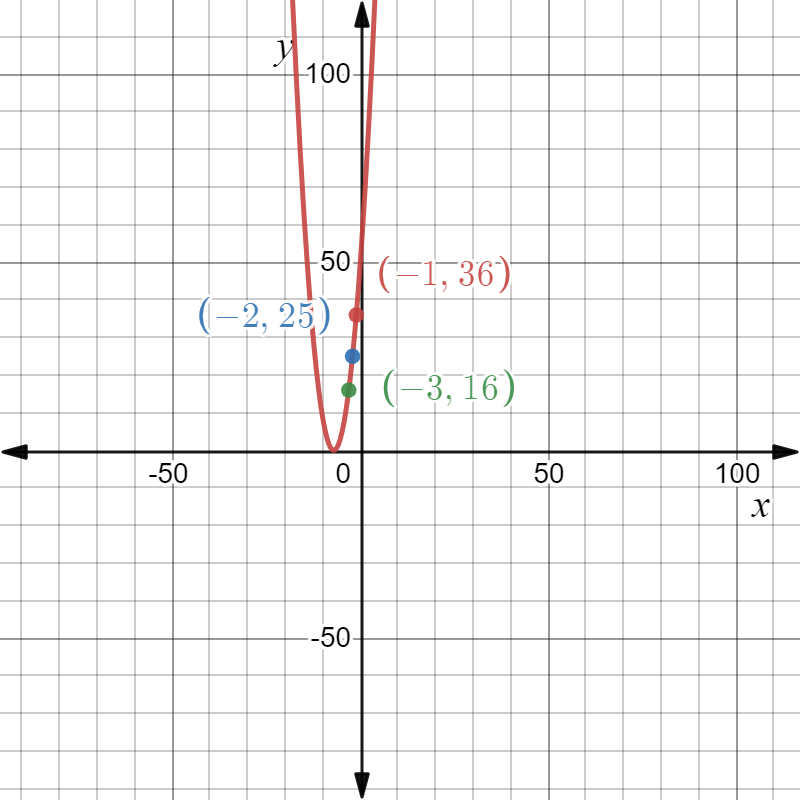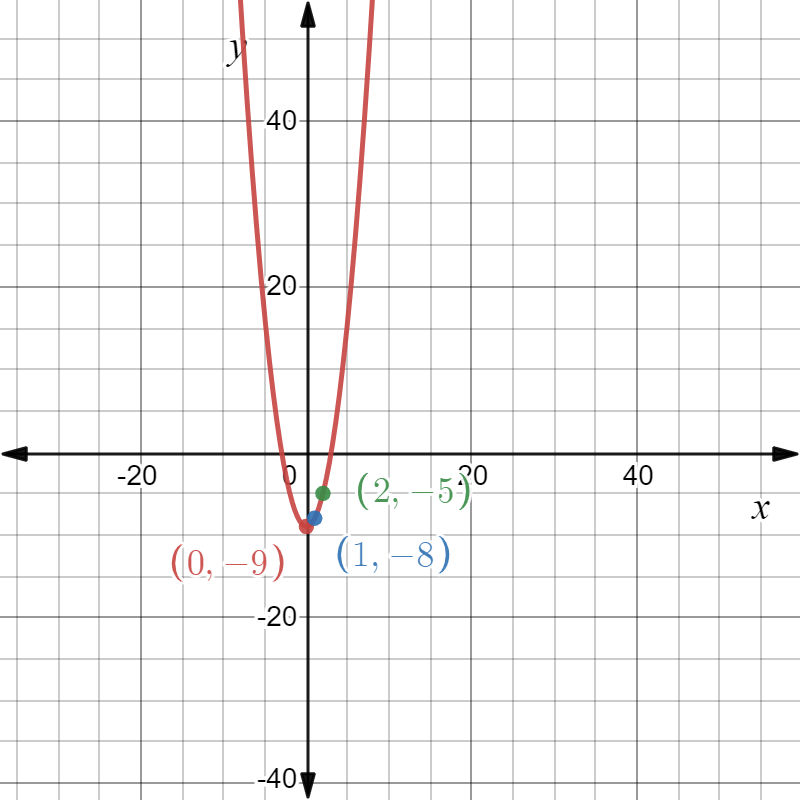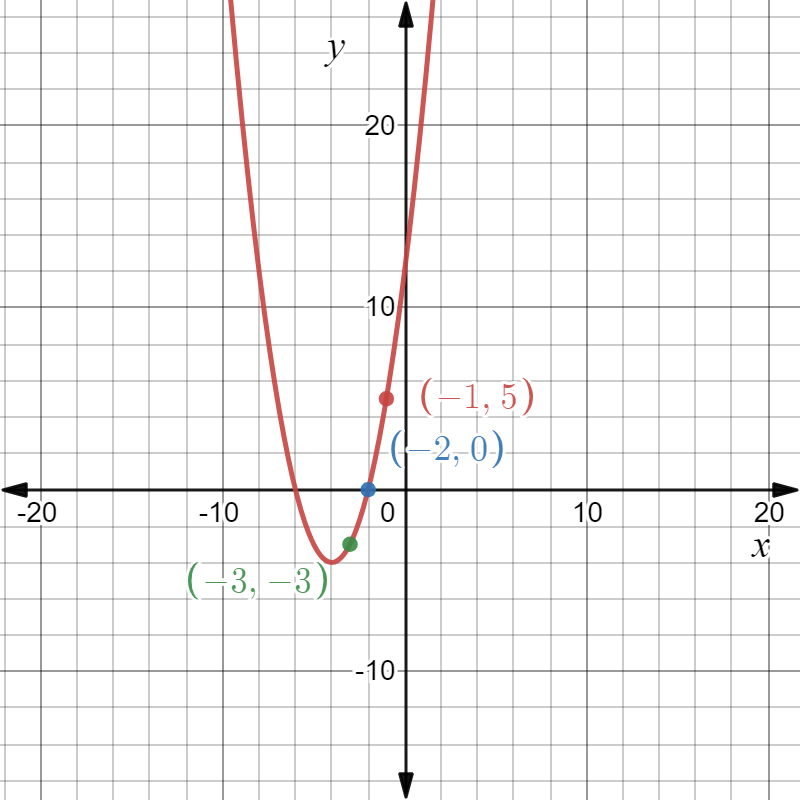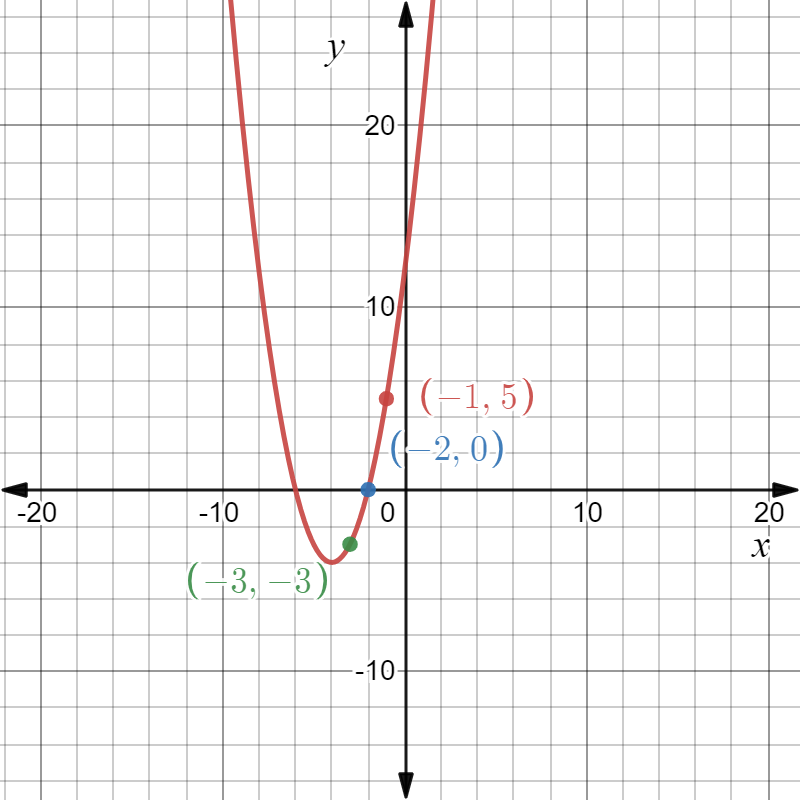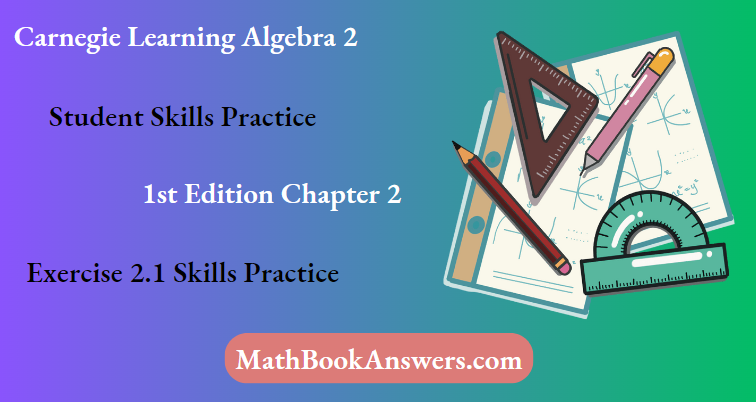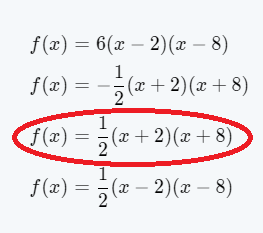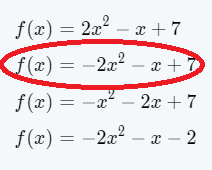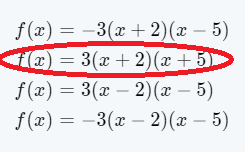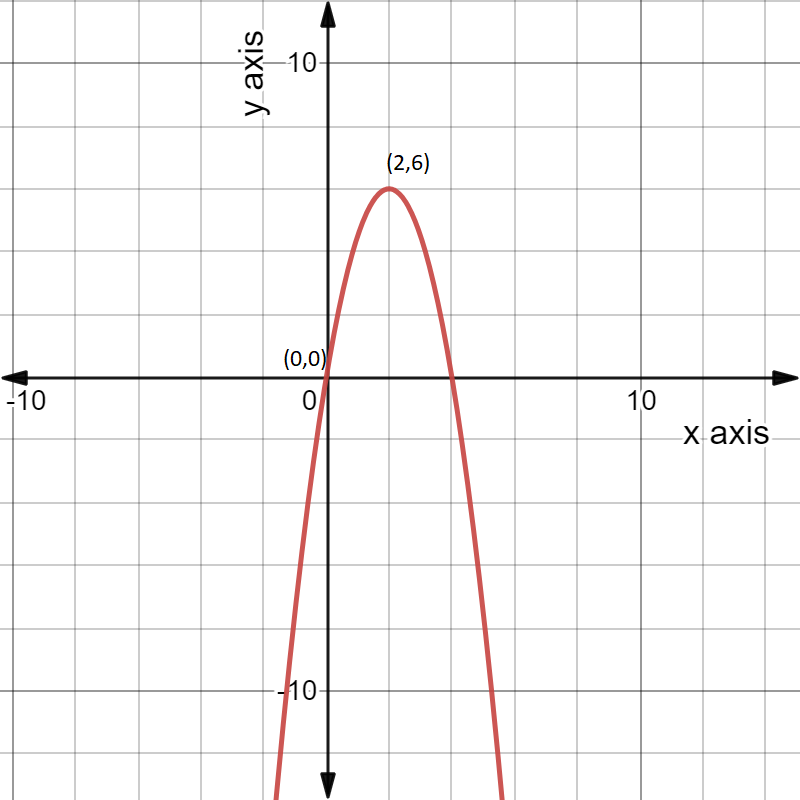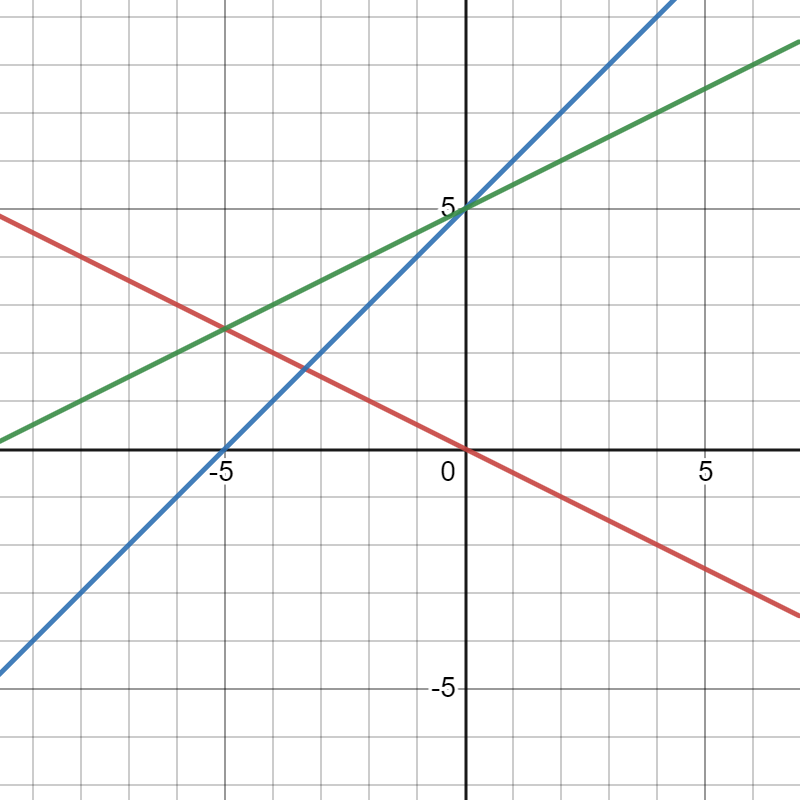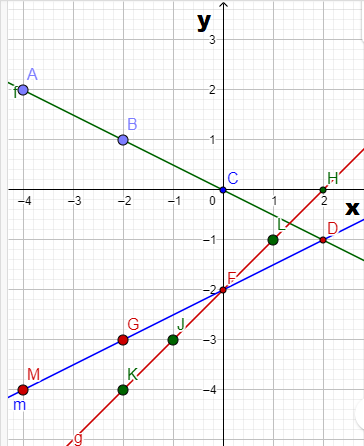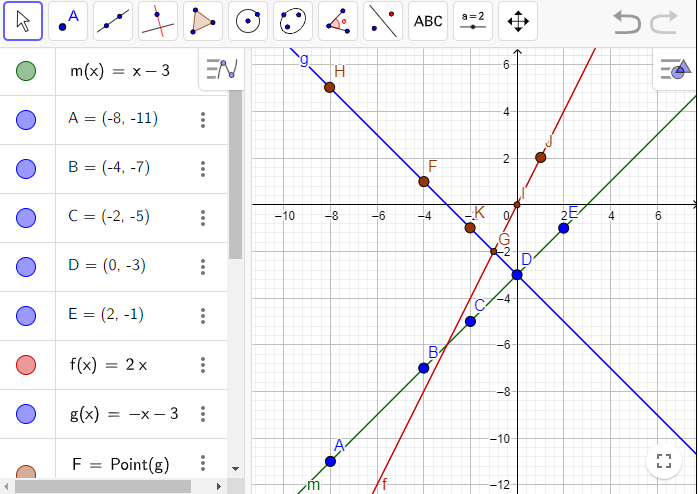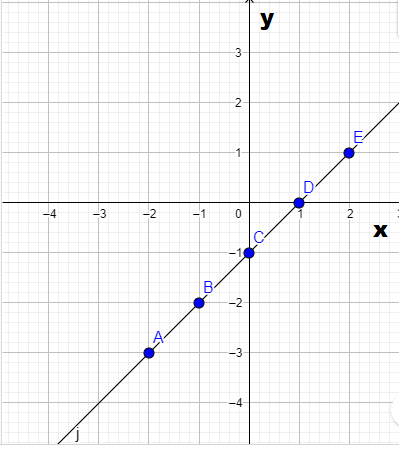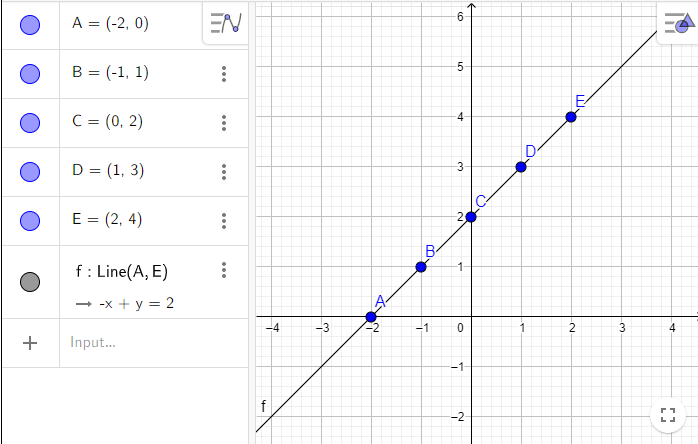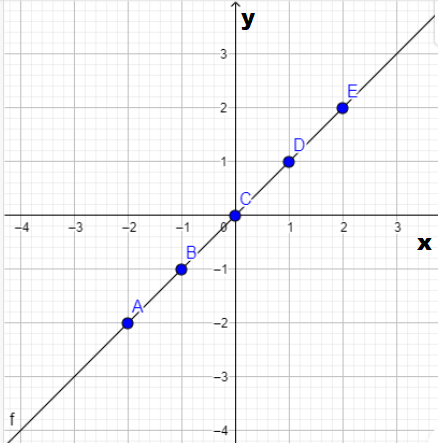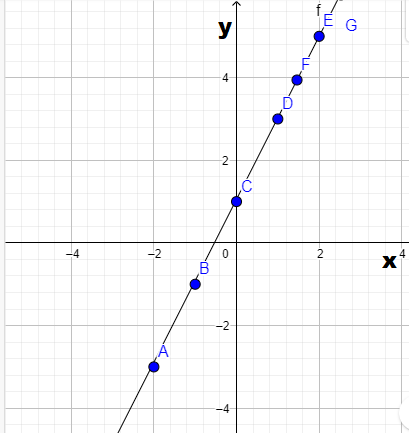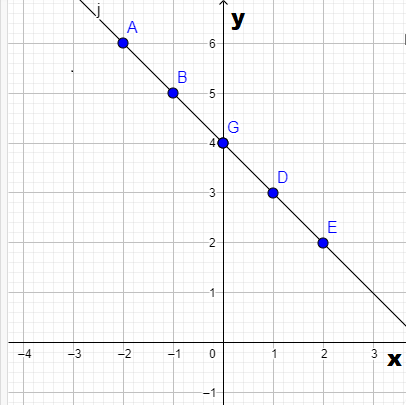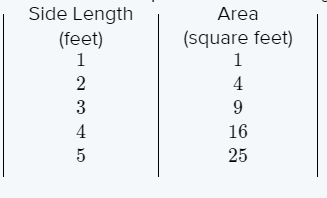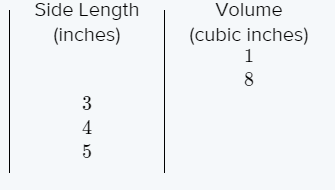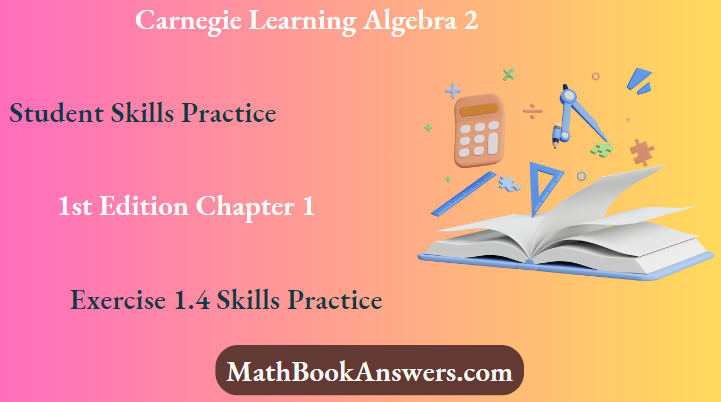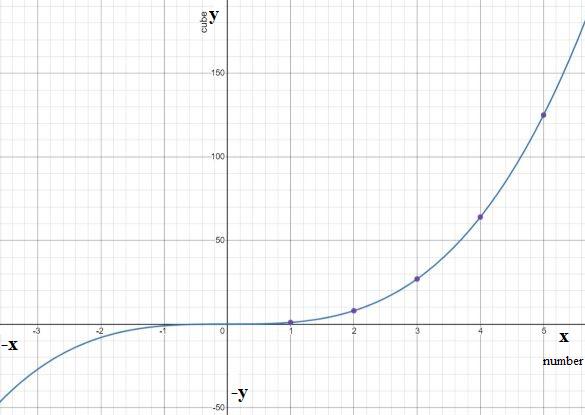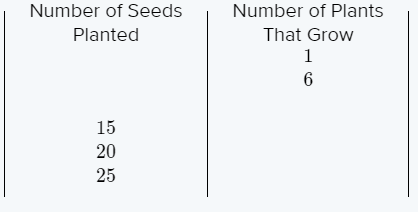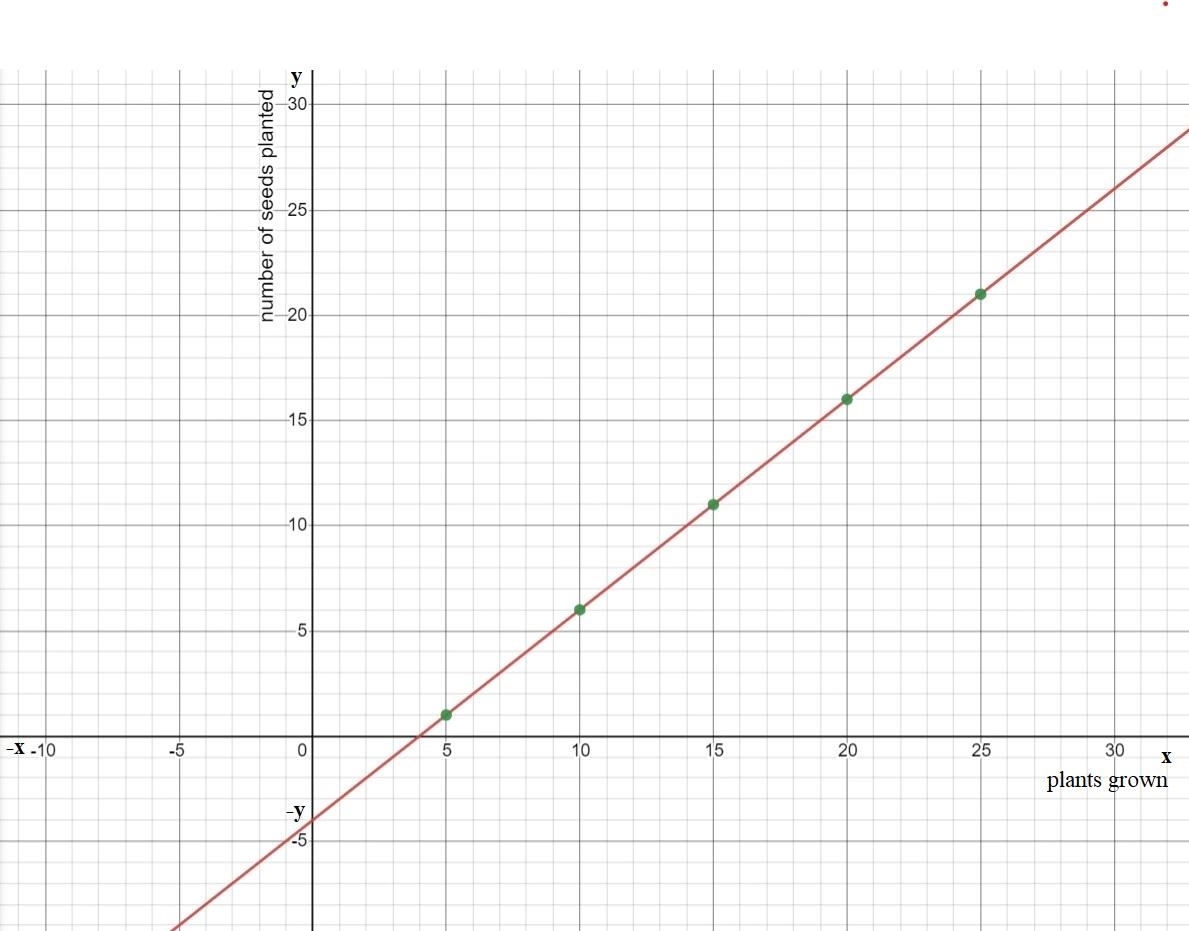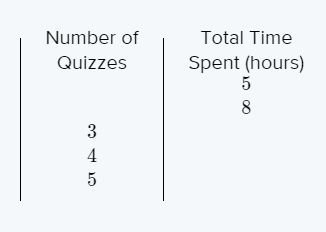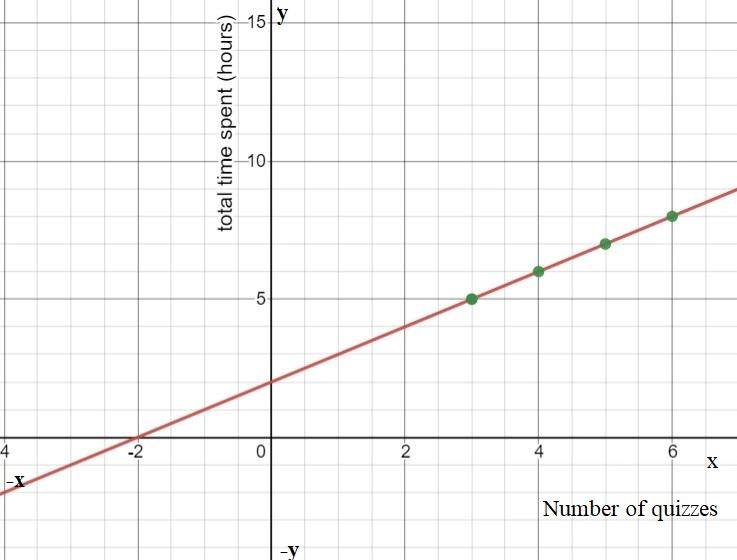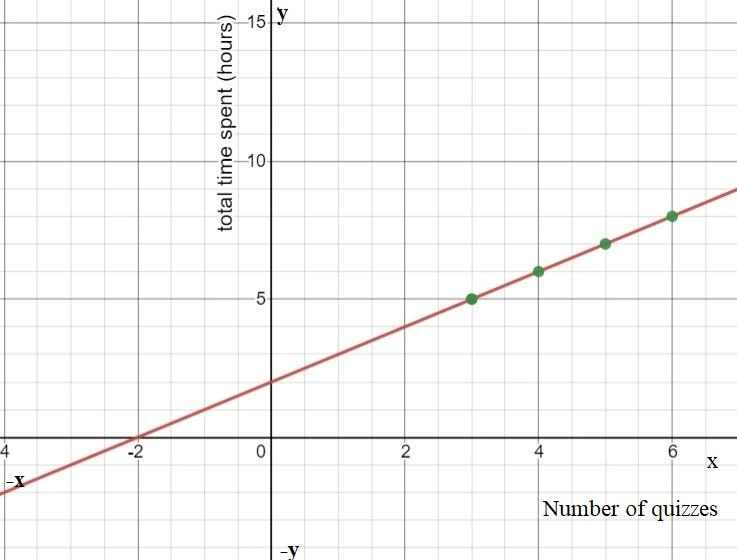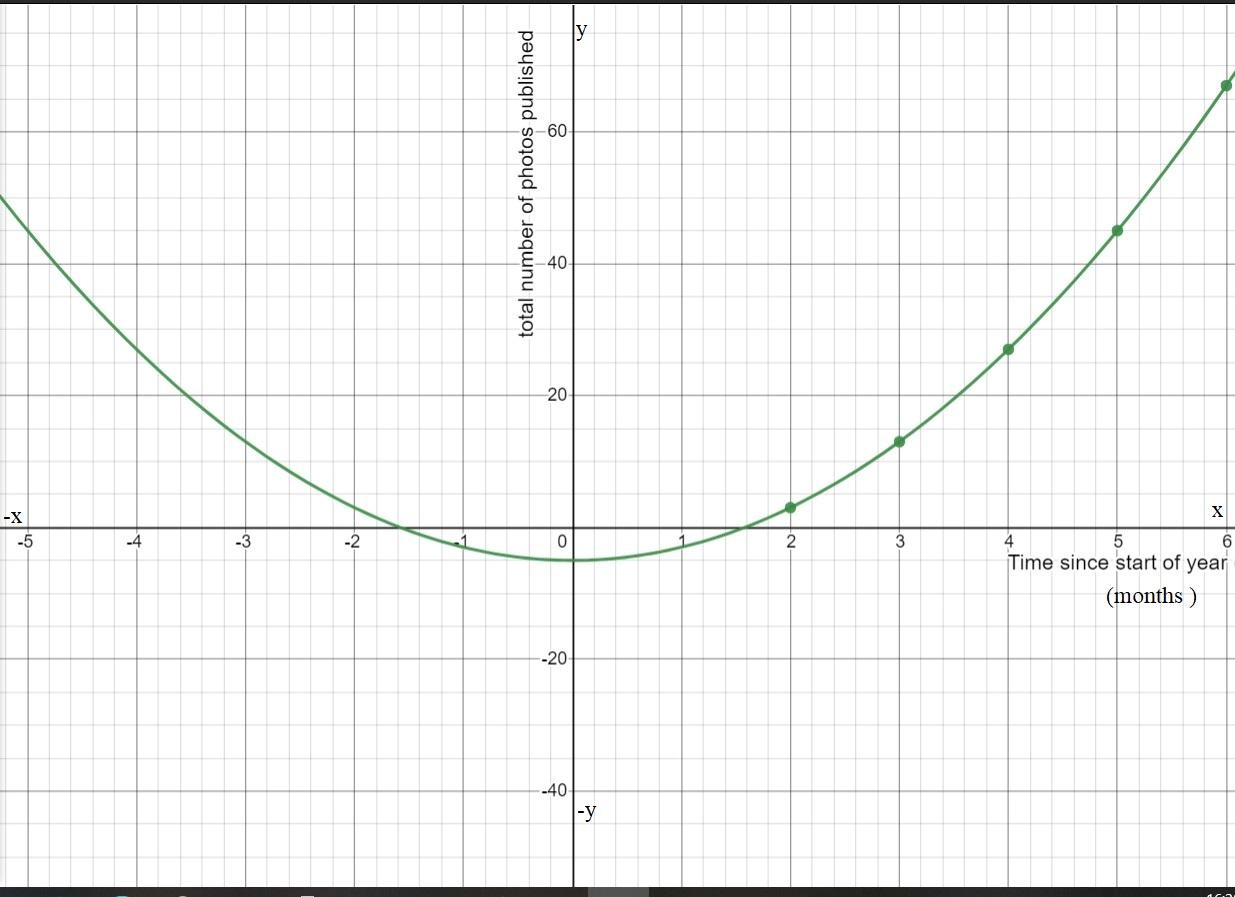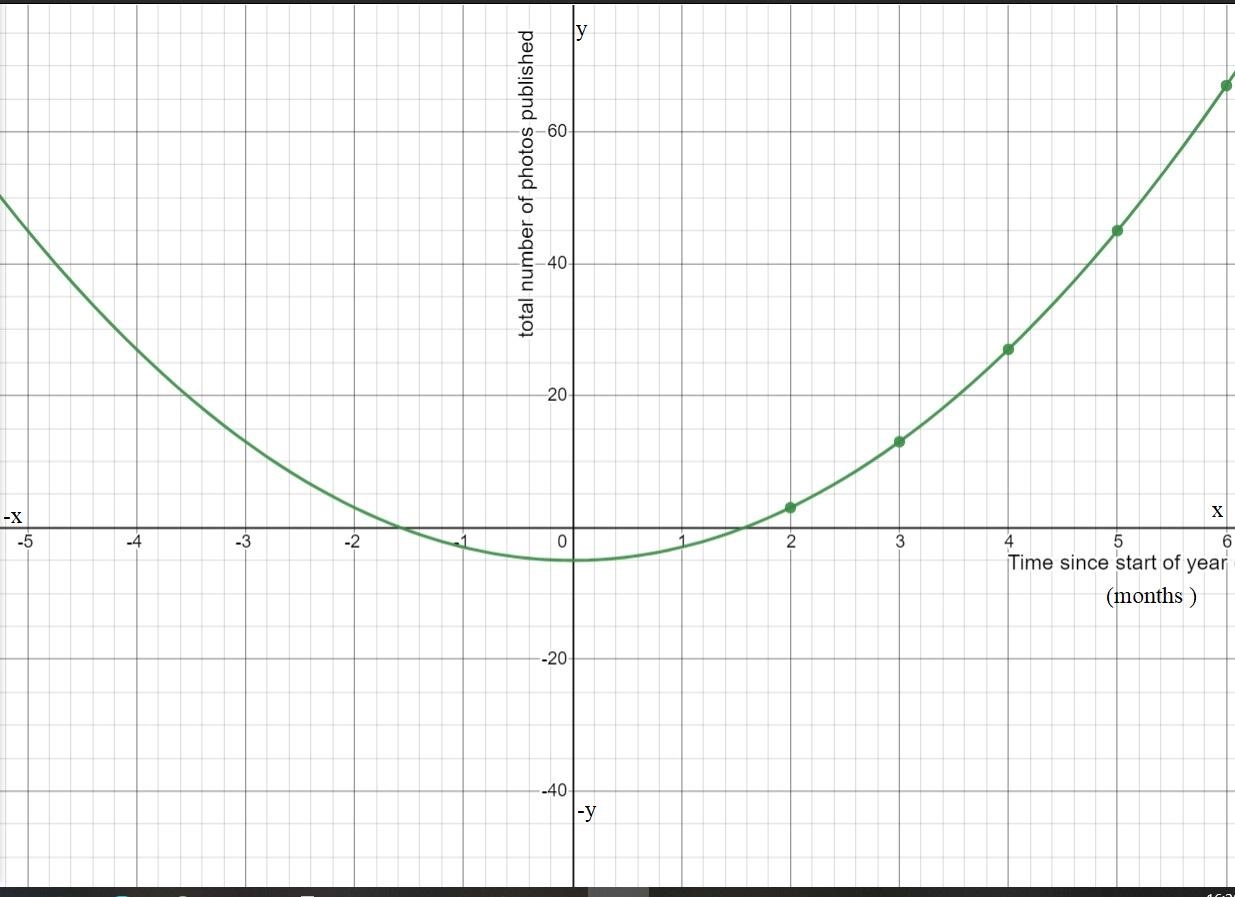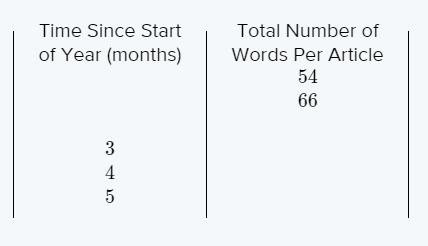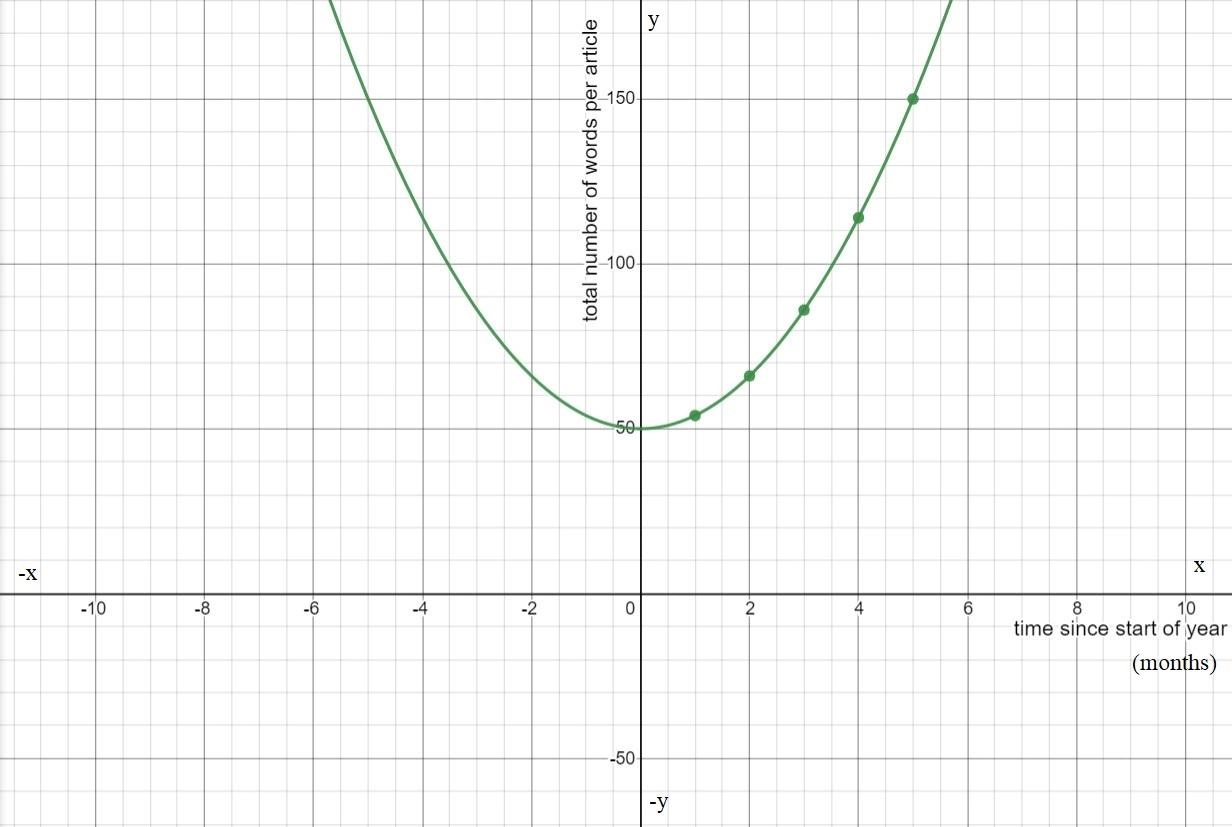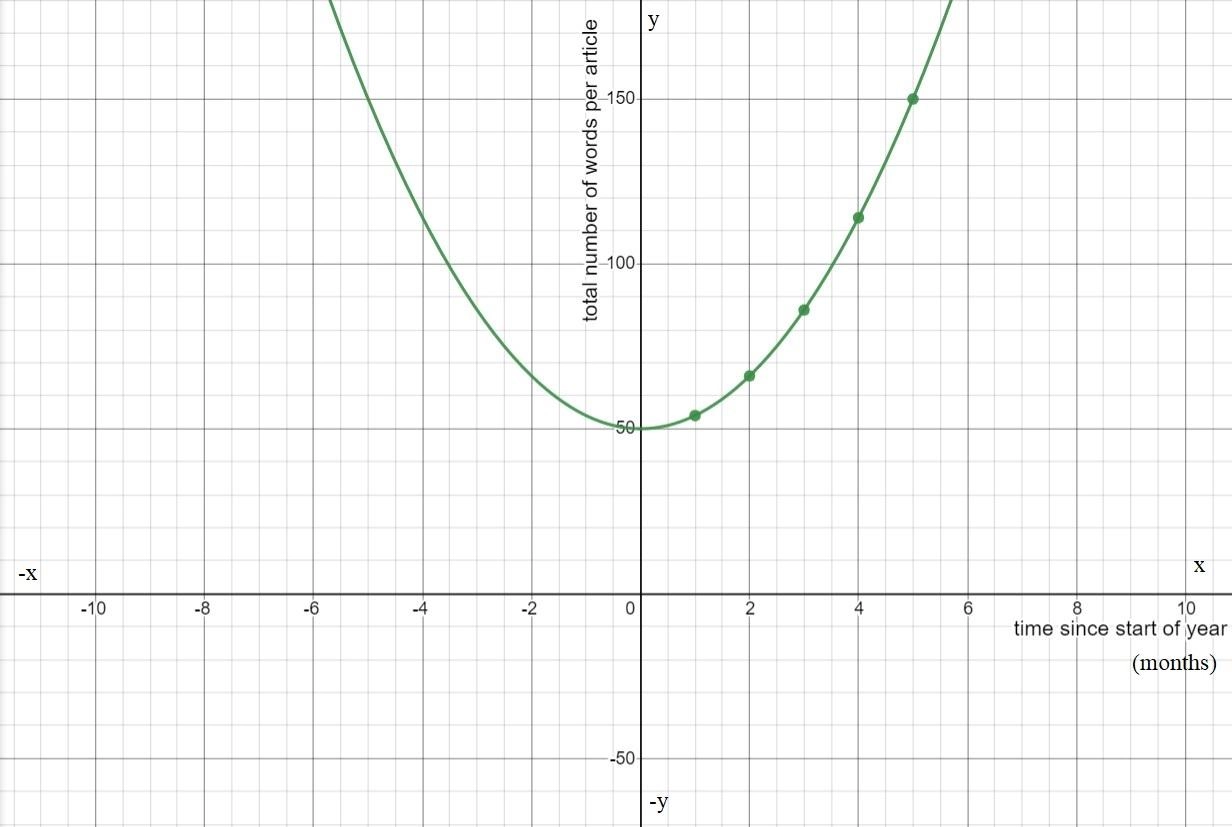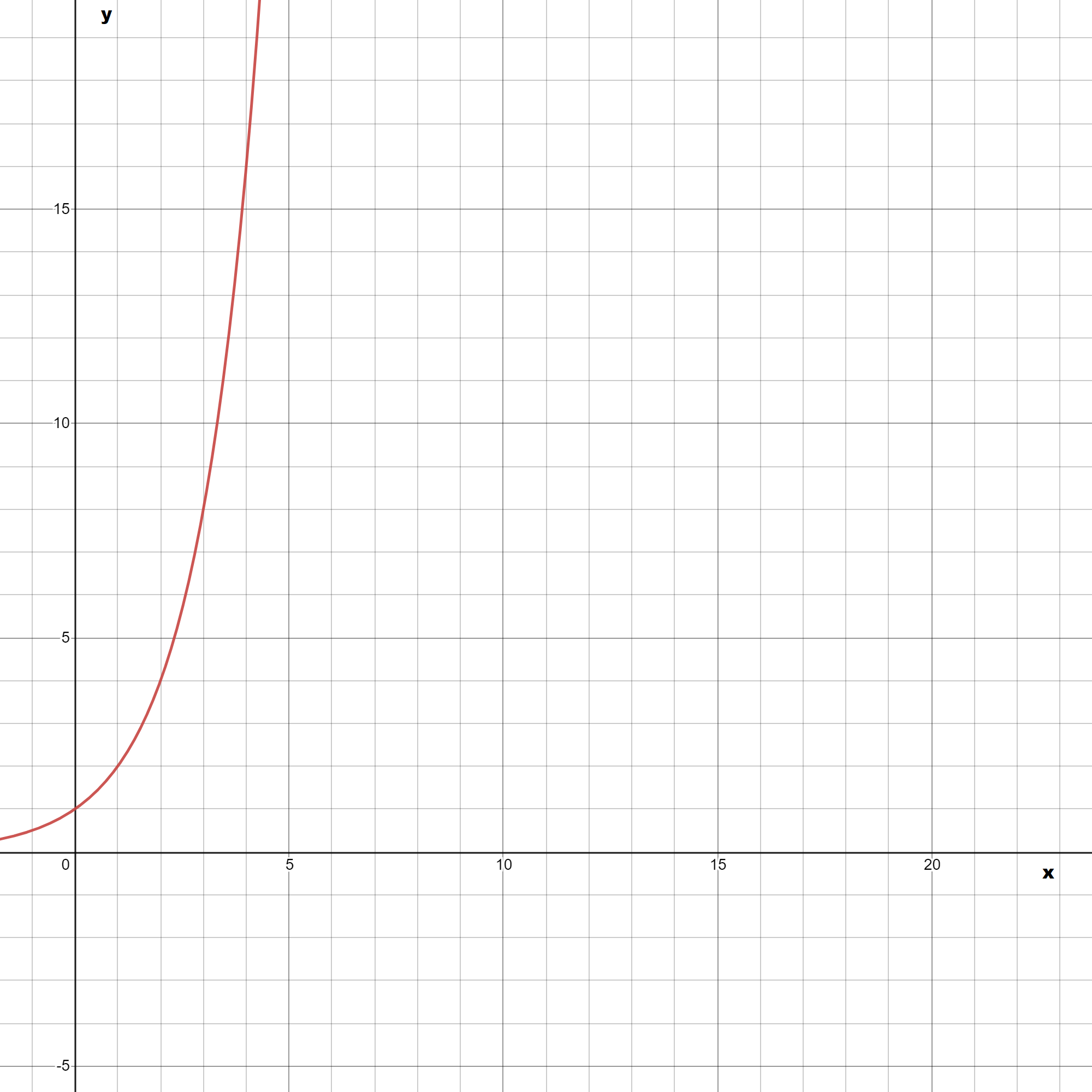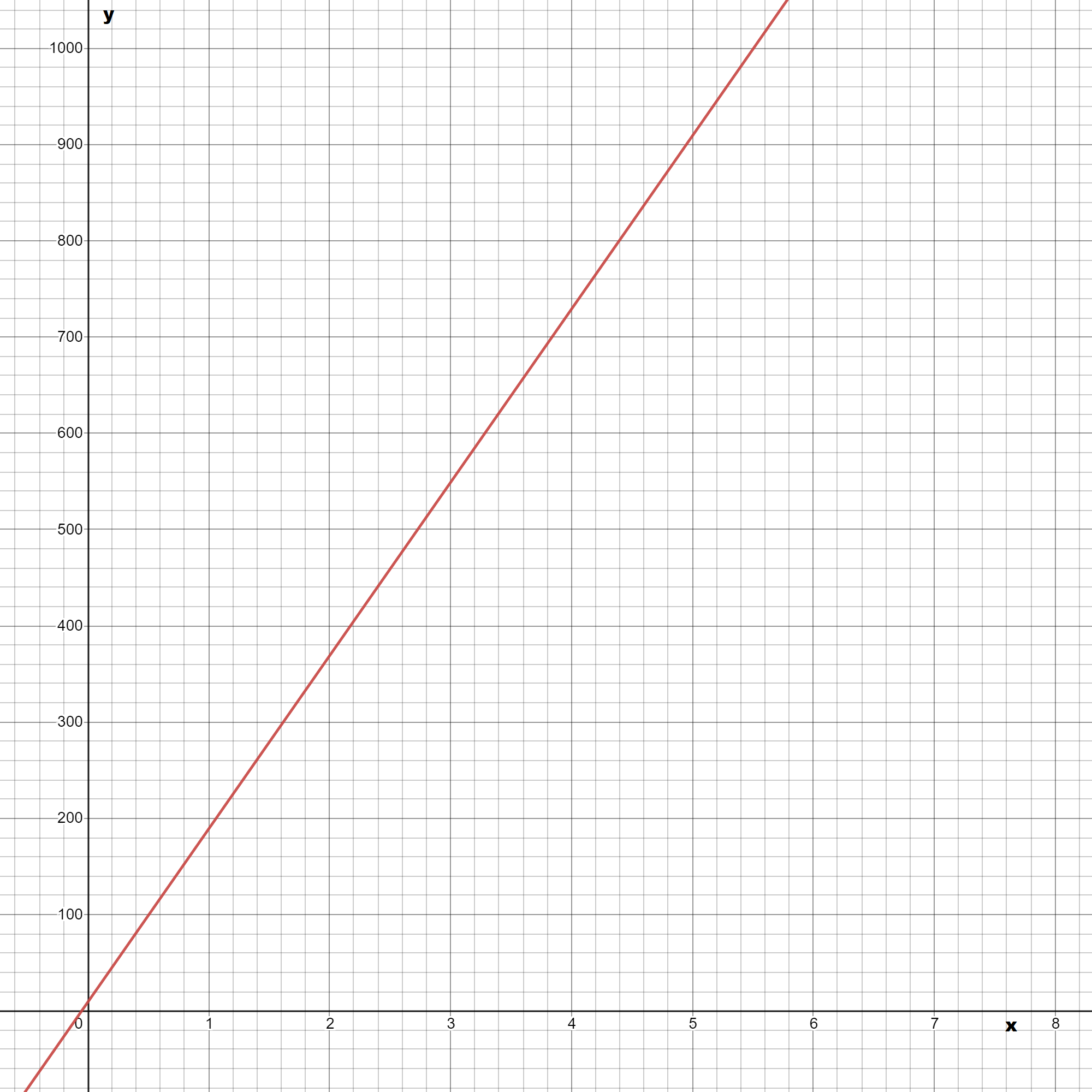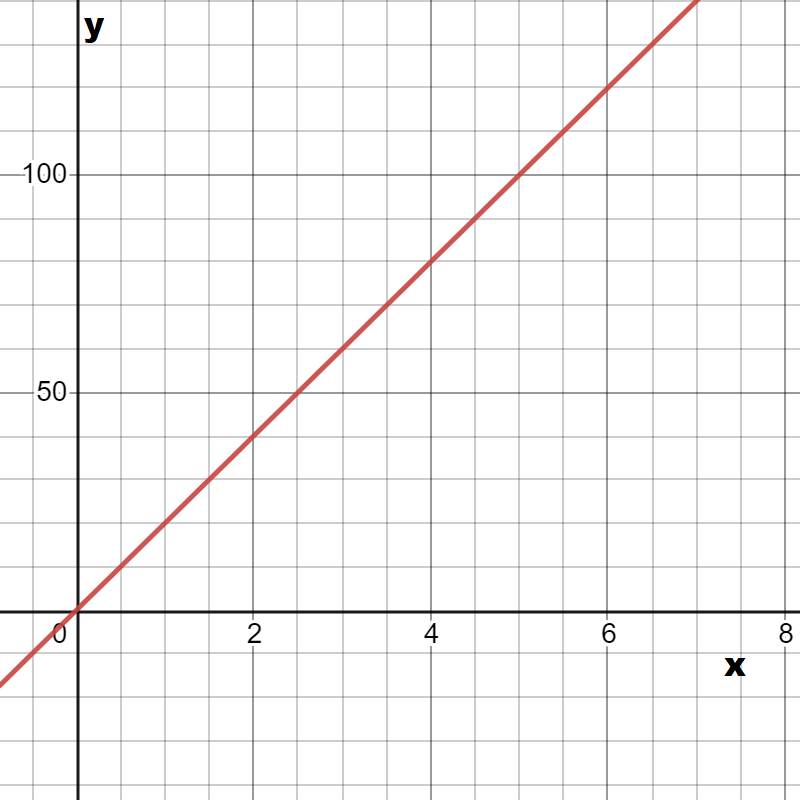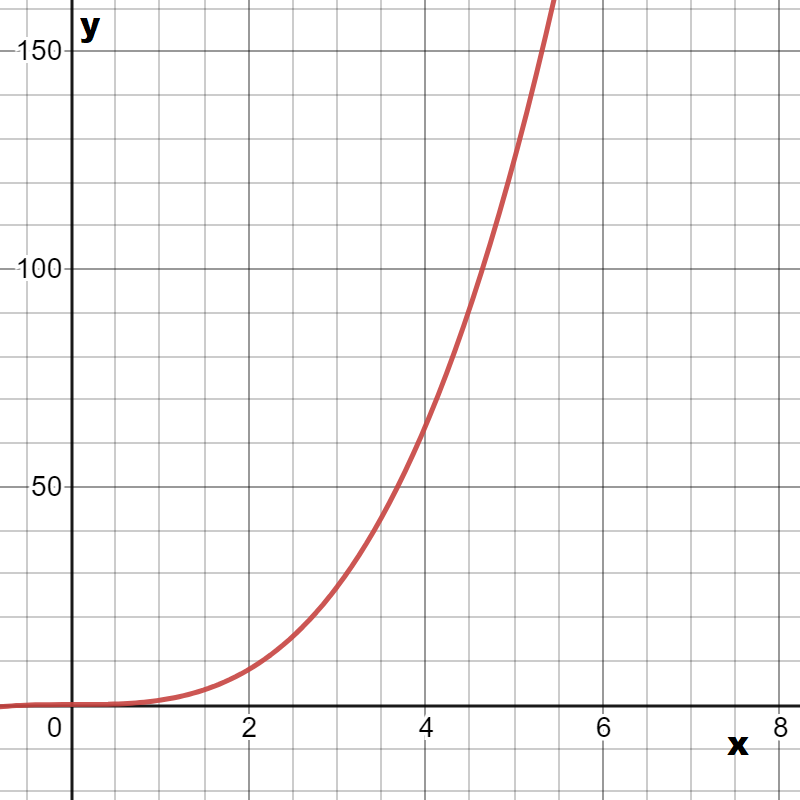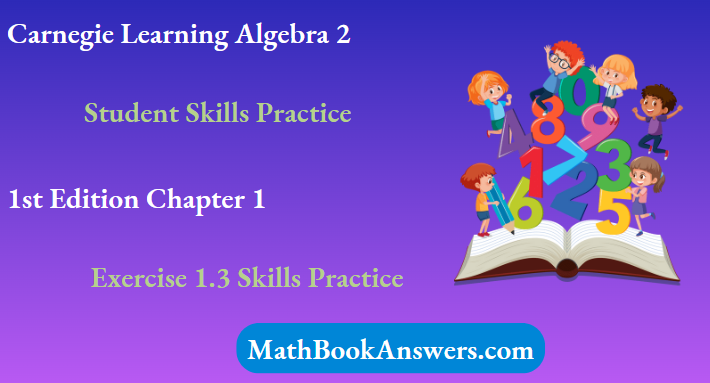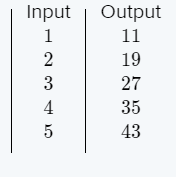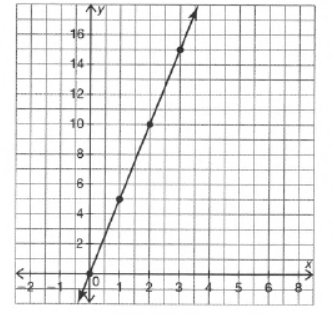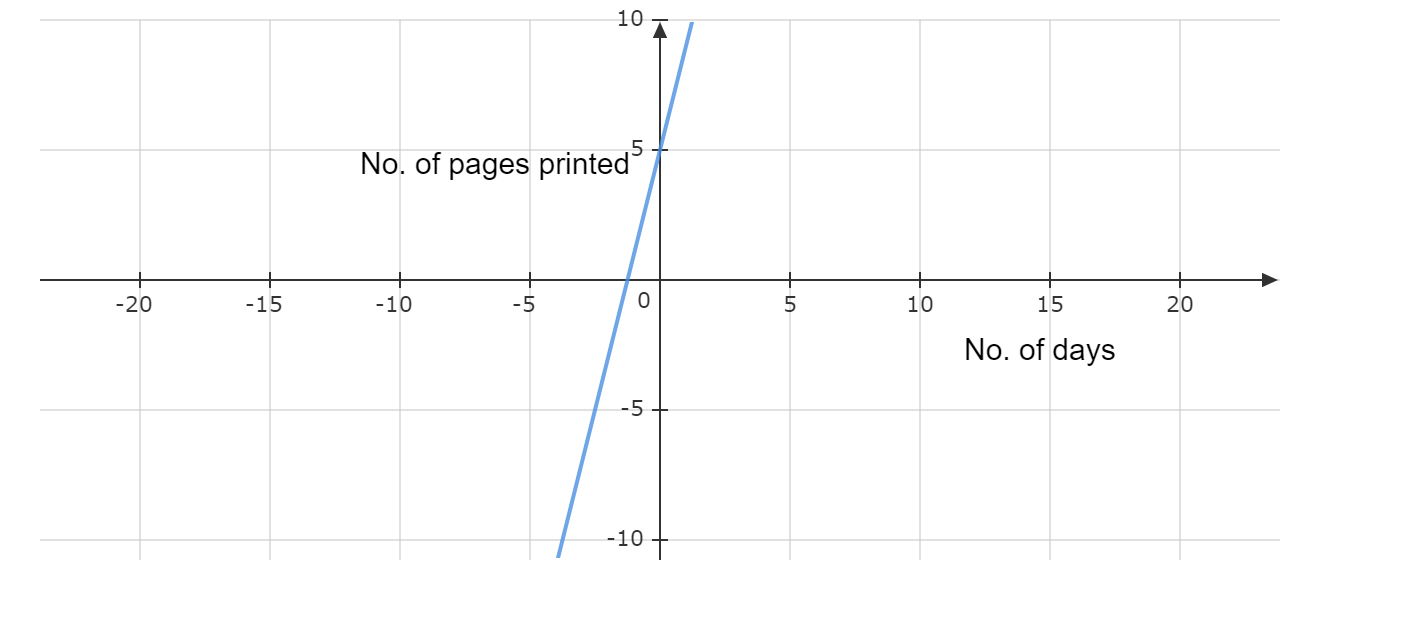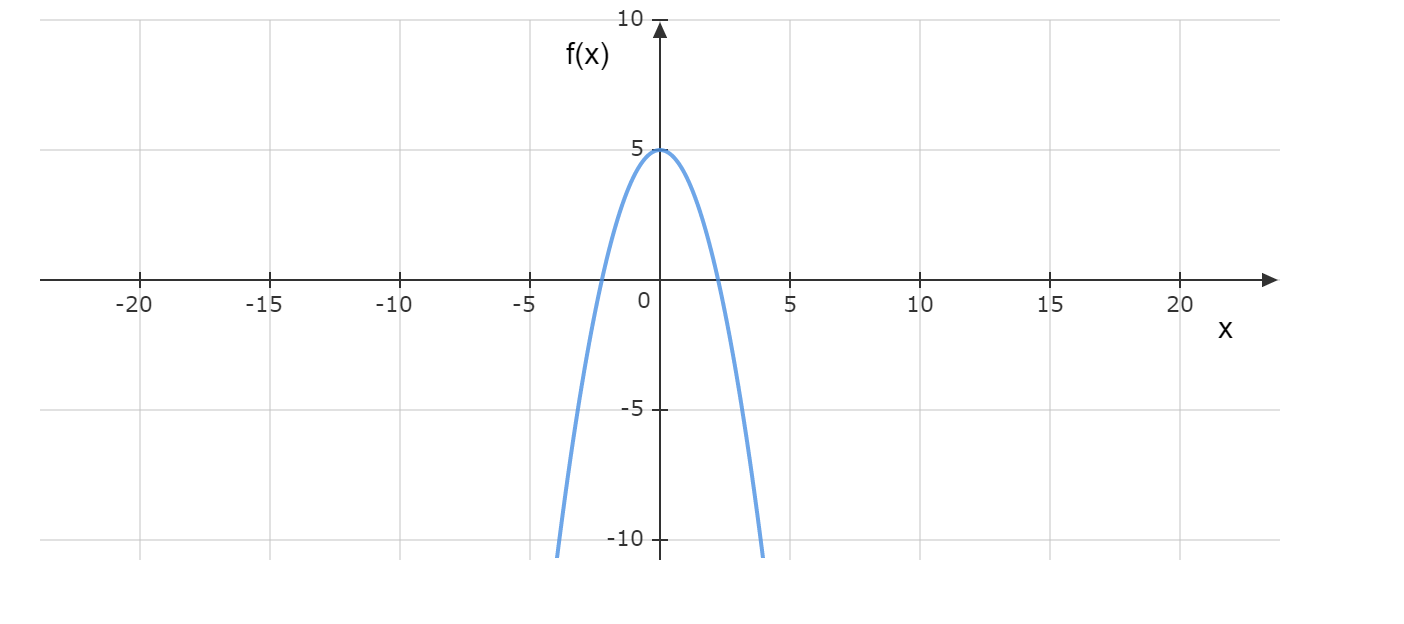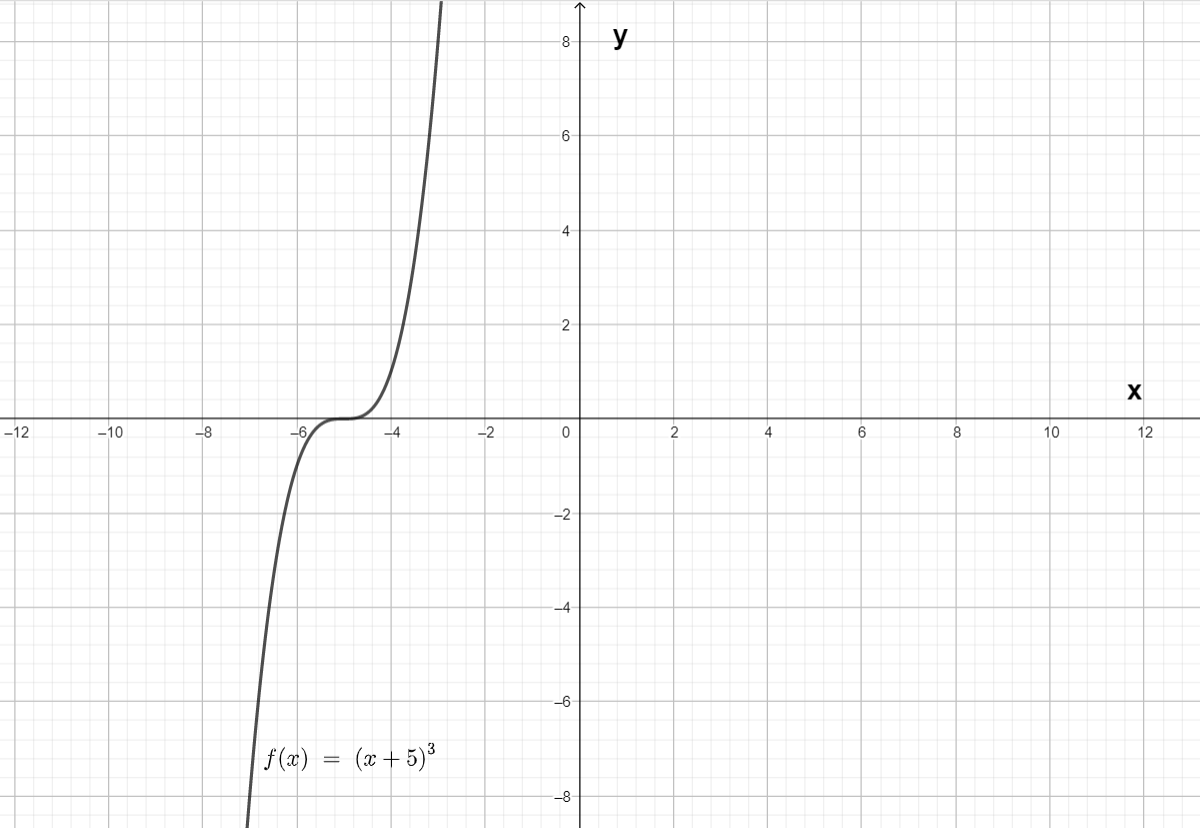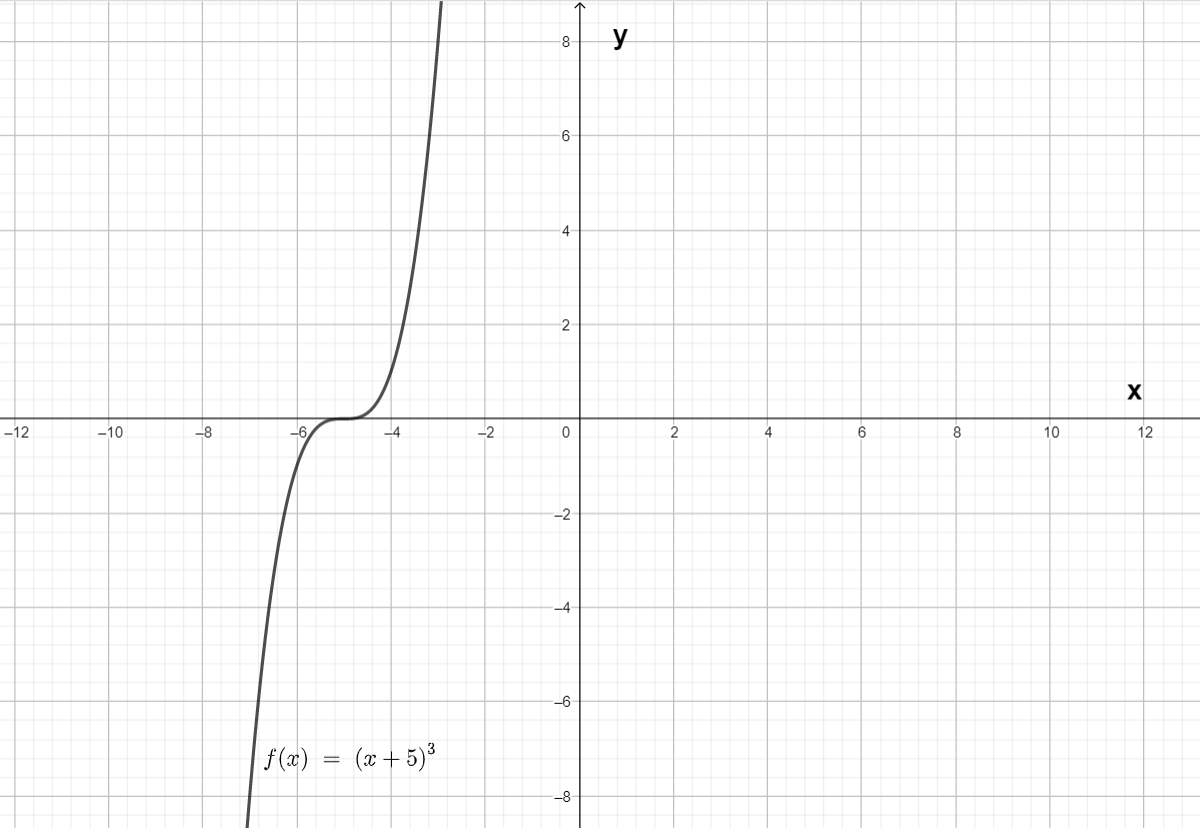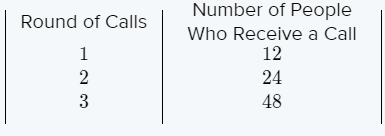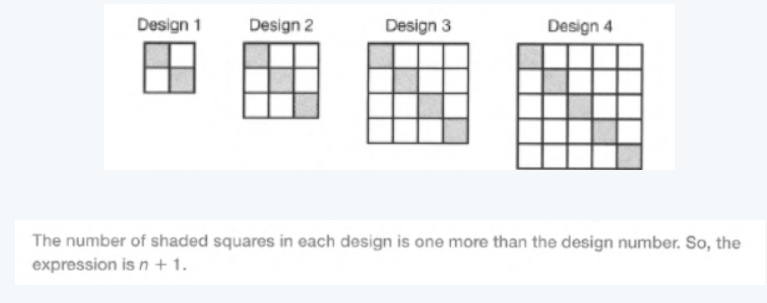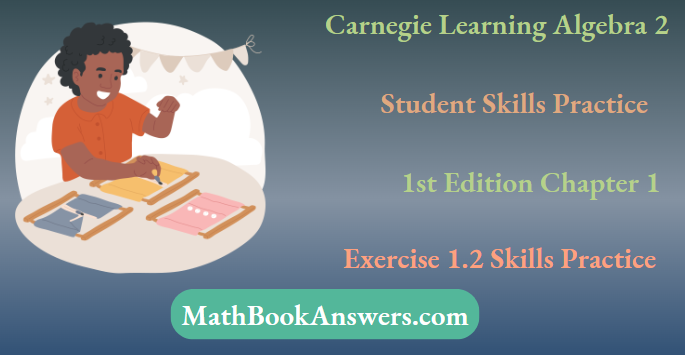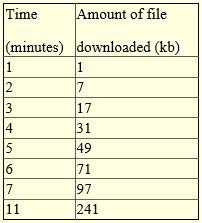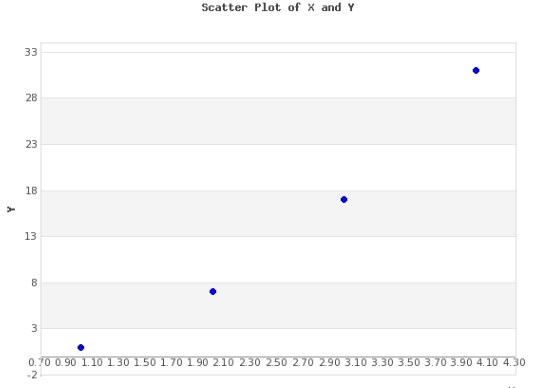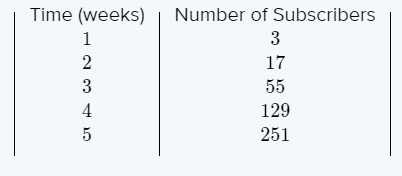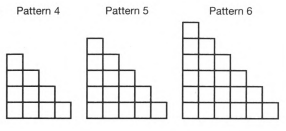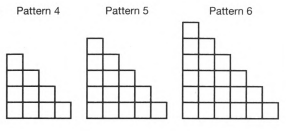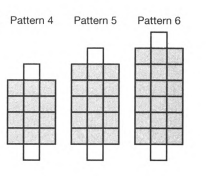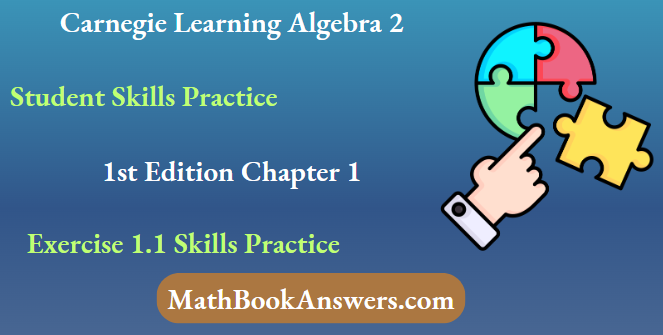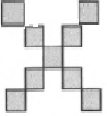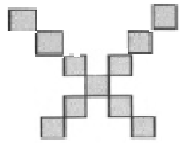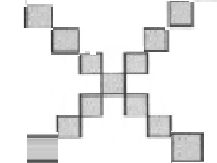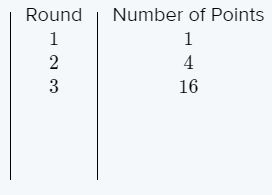Carnegie Learning Algebra II Student Skills Practice 1st Edition Chapter 2 Exercise 2.4 Skills Practice
Page 287 Problem 1 Answer
We have to explain the similarities and the difference between horizontal dilation, horizontal stretching, and horizontal compression of a quadratic function.
Given a quadratic function f(x)=ax2+bx+c,a≠0.Then we have the following transformations:
Horizontal dilation: When we replace the independent variable x in the equation of f by mx where m is a nonzero constant, it is called as horizontal dilation.
Depending upon the value of m,horizontal dilation has two classifications:
If m>1, then the graph of f(x) will be compressed horizontally by 1/m or we say the graph of f is compressed horizontally by a factor of 1/m.
This is called as horizontal compression.
If 0<m<1 , the graph of f(x) will be stretched horizontally by 1/m or we say the graph of f is stretched horizontally by a factor of 1/m.
This is called as horizontal stretching. Hence the similarity among the three is that they belong to the same category of transformation i.e the transformation occurs horizontally .
The difference between horizontal stretching and horizontal compression is that in the former case,the graph obtained after stretching is wider(in the horizontal direction) than the original graph of f(x) and in the latter case,the graph obtained after compression is narrower than the original graph of f(x).
The difference is illustrated below.
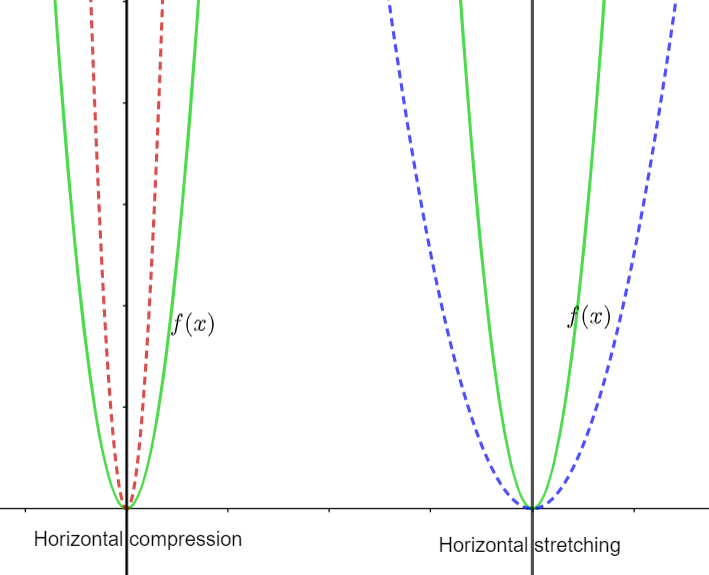
Hence we summarized the similarities and differences between horizontal dilation, horizontal stretching, and horizontal compression of a quadratic function.
Carnegie Learning Algebra II Chapter 2 Exercise 2.4 solutions
Page 287 Problem 2 Answer
We are given that f(x)=x2 and that m(x)=f(1/5x).
We are asked to complete the table and draw the graph of m(x).
We also have to describe how the graph of m(x) compares to the graph of f(x).
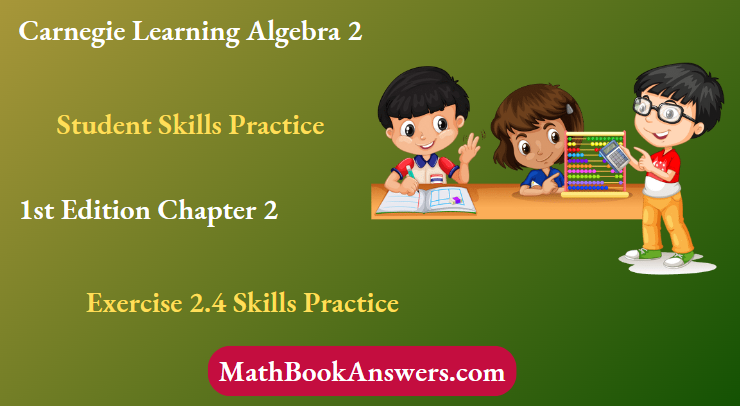
Since f(x)=x2
we have m(x) as m(x)=f(1/5x)
=(x/5)2
=x2/25
Now we complete the table
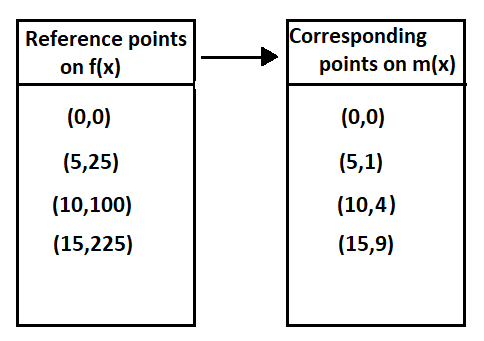
The graph of m(x) is Plotting the graphs of f(x) and m(x) together we observe
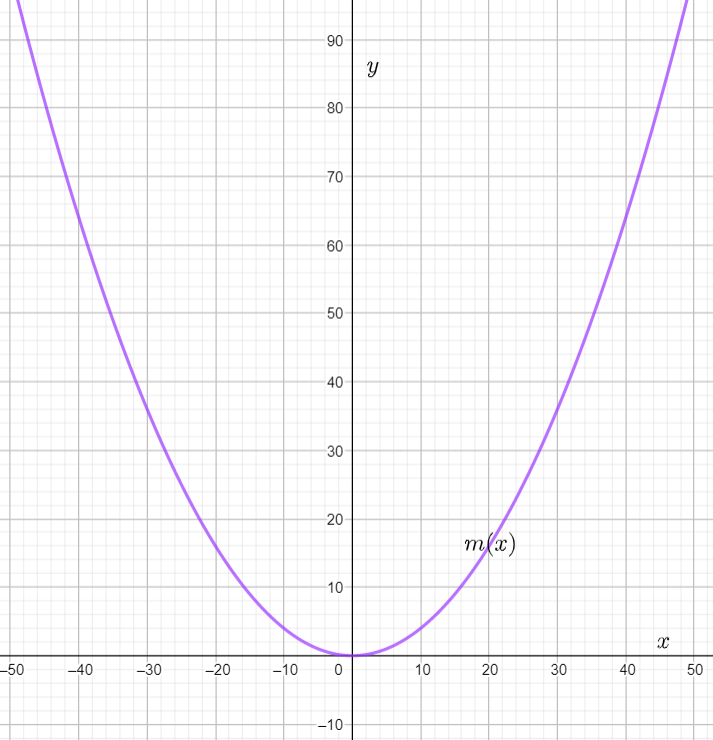
Hence the graph of m(x) looks the graph of f(x) stretched horizontally by a factor of 5.
Hence we completed the table of m(x) and found that m(x) is the horizontal stretch of f(x).

Carnegie Learning Algebra II Student Skills Practice 1st Edition Chapter 2 Exercise 2.4 Skills Practice Page 288 Problem 3 Answer
We are given that f(x)=x2 and that m(x)=f(1.5x).
We are asked to complete the table and draw the graph of m(x).
We also have to describe how the graph of m(x) compares to the graph of f(x).
Since f(x)=x2
we have m(x) as
m(x)=f(1.5x)
=(1.5x)2
=2.25x2
Now we complete the table
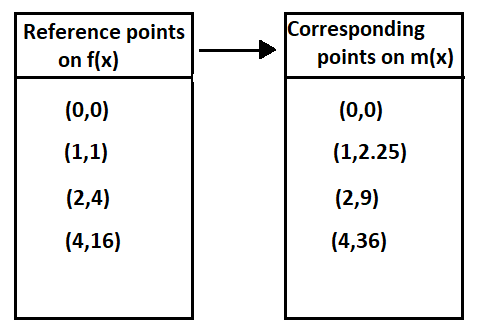
The graph of m(x) is
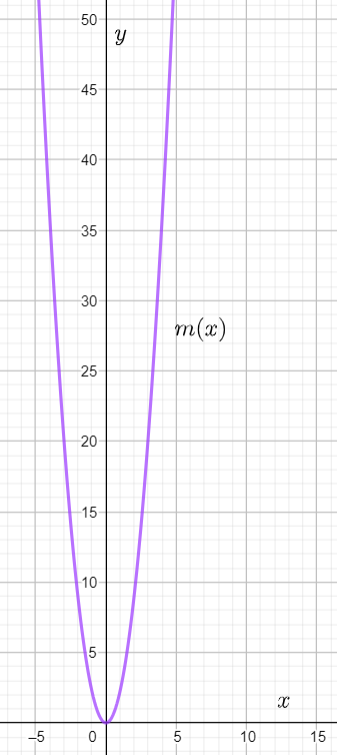
Plotting the graphs of f(x) and m(x) together we observe
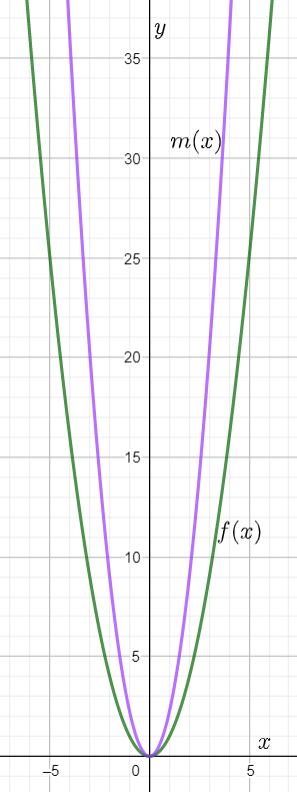
Hence the graph of m(x) looks like the graph of f(x) compressed horizontally by a factor of 1/1.5.
Since 1/1.5 =2/3, we can conclude m(x) is the horizontal compression of f(x) by a factor of 2/3.
Hence we completed the table of m(x) and found that m(x) is the horizontal compression of f(x).
Skills Practice Carnegie Learning Algebra II answers
Carnegie Learning Algebra II Student Skills Practice 1st Edition Chapter 2 Exercise 2.4 Skills Practice Page 288 Problem 4 Answer
We are given that f(x)=x2 and that m(x)=f(4x).
We are asked to complete the table and draw the graph of m(x).
We also have to describe how the graph of m(x) compare to the graph of f(x).
Since f(x)=x2
we have m(x) as
m(x)=f(4x)
=(4x)2
=16x2
Now we complete the table
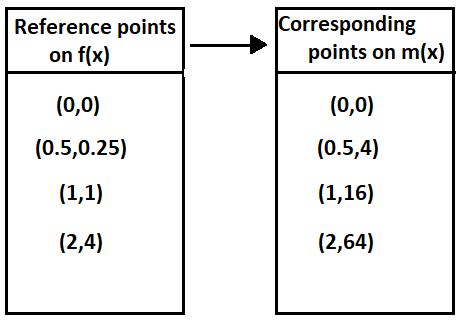
The graph of m(x) is
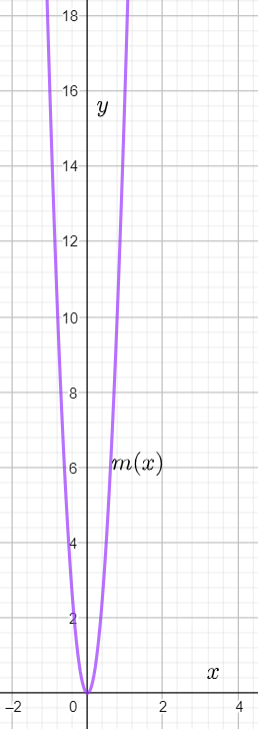
Plotting the graphs of f(x) and m(x) together we observe
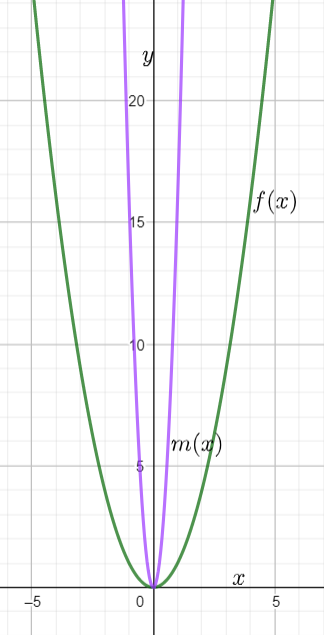
Hence the graph of m(x) looks like the graph of f(x) compressed horizontally by a factor of 1/4.
Since 1/4 =0.25, we can conclude that m(x) is the horizontal compression of f(x) by a factor of 0.25.
Hence we completed the table of m(x) and found that m(x) is the horizontal compression of f(x).
Page 288 Problem 5 Answer
We are given that f(x)=x2 and that m(x)=f(0.25x).
We are asked to complete the table and draw the graph of m(x).
We also have to describe how the graph of m(x) compare to the graph of f(x).
Since f(x)=x2
we have m(x) as
m(x)=f(0.25x)
=(0.25x)2
=0.0625x2
Now we complete the table
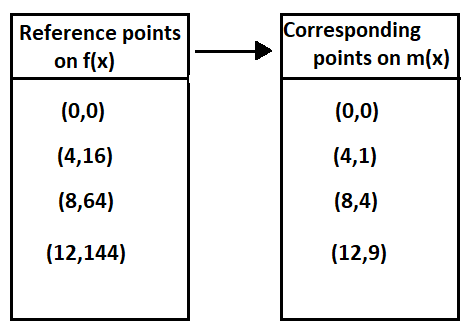
The graph of m(x) is
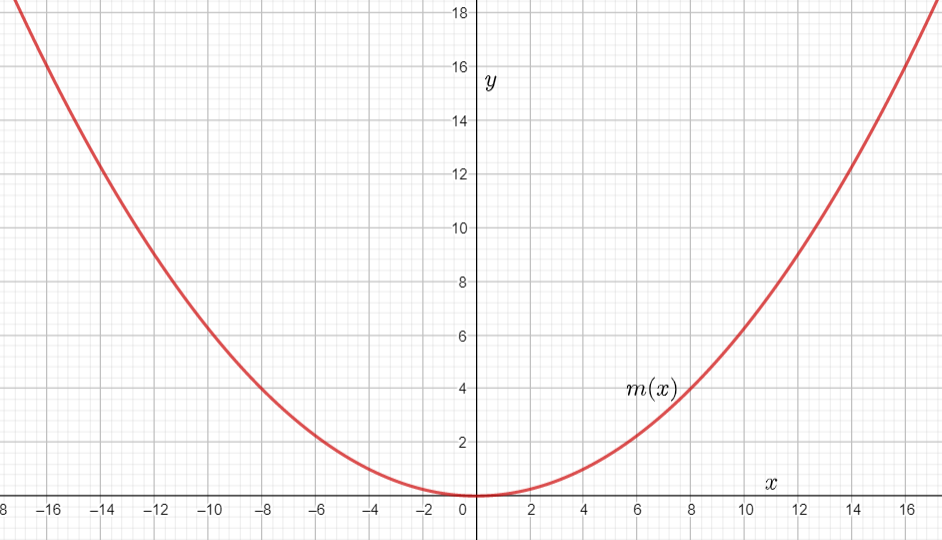
Plotting the graphs of f(x) and m(x) together we observe
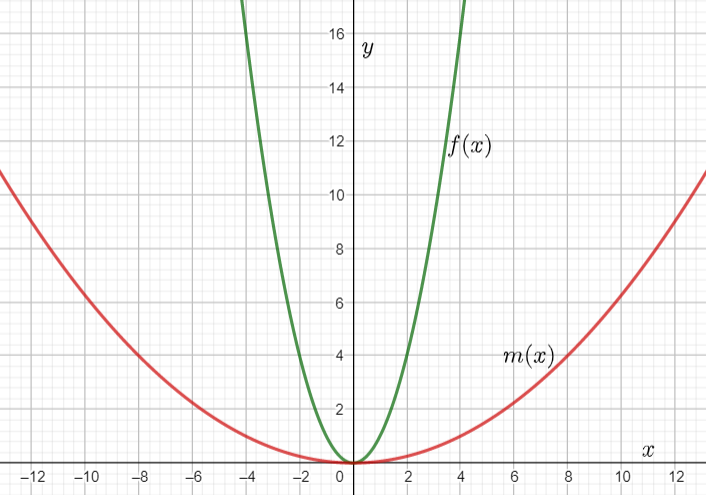
Hence the graph of m(x) looks like the graph of f(x) stretched horizontally by a factor of 1/0.25.
Since 1/0.25 =100/25 =4, we can conclude m(x) is the horizontal stretch of f(x) by a factor of 4.
Hence we completed the table of m(x) and found that m(x) is the horizontal stretch of f(x).
Carnegie Learning Algebra II practice questions Chapter 2
Carnegie Learning Algebra II Student Skills Practice 1st Edition Chapter 2 Exercise 2.4 Skills Practice Page 289 Problem 6 Answer
We are given that f(x)=x2 and that m(x)=f(2/3x).
We are asked to complete the table and draw the graph of m(x).
We also have to describe how the graph of m(x) compares to the graph of f(x).
Since f(x)=x2
we have m(x) as
m(x)=f(2/3x)
=(2/3x)2
=4/9x2
Now we complete the table

The graph of m(x) is
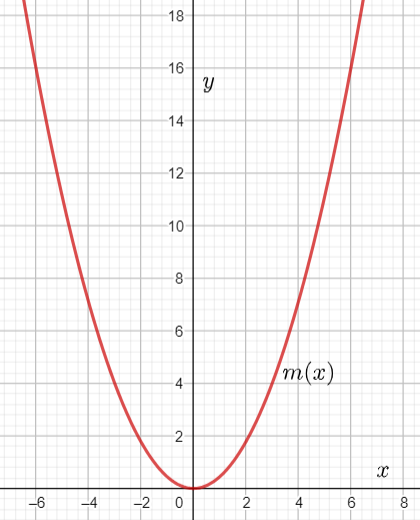
Plotting graphs of f(x) and m(x) together we observe

Hence the graph of m(x) looks like the graph of f(x) stretched horizontally by a factor of 1×2/3.
Since 1×2/3
=3/2
=1.5, we can conclude m(x) is the horizontal stretch of f(x) by a factor of 1.5.
Hence we completed the table of m(x) and found that m(x) is the horizontal stretch of f(x).
Page 289 Problem 7 Answer
We are given that f(x)=x2 and that m(x)=f(2x).
We are asked to complete the table and draw the graph of m(x).
We also have to describe how the graph of m(x) compares to the graph of f(x).
Since f(x)=x2
we have m(x) as
m(x)=f(2x)
=(2x)2
=4x2
Now we complete the table
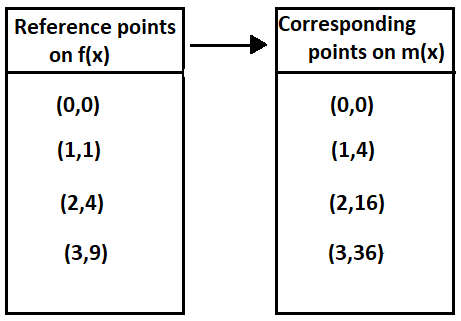
The graph of m(x) is
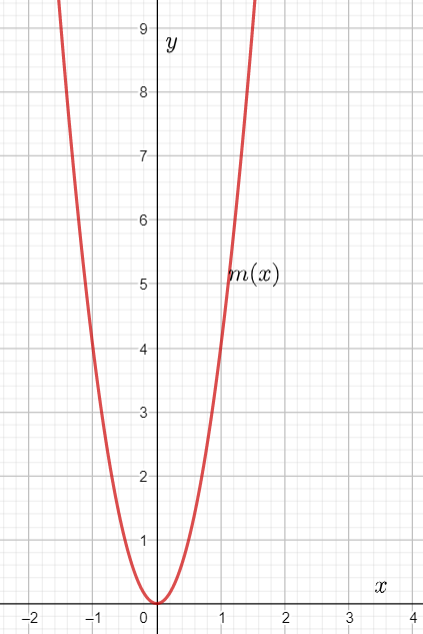
Plotting the graphs of m(x) and f(x) together we observe
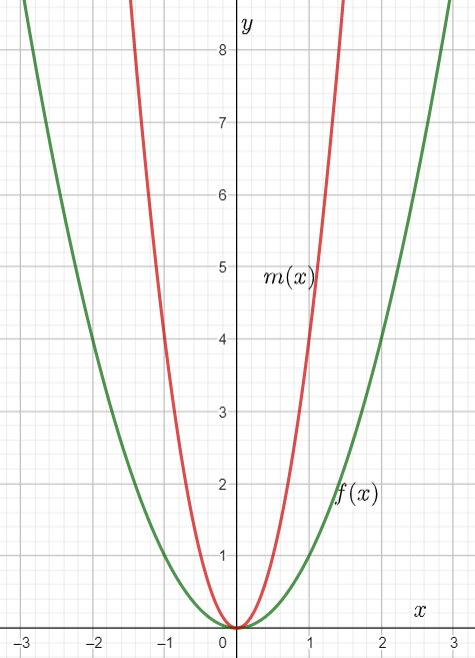
Hence the graph of m(x) looks like the graph of f(x) compressed horizontally by a factor of 1/2.
Since 1/2=0.5, we can conclude that m(x) is the horizontal compression of f(x) by a factor of 0.5.
Hence we completed the table of m(x) and found that m(x) is the horizontal compression of f(x).
Page 290 Problem 8 Answer
We are given the graph of f(x)
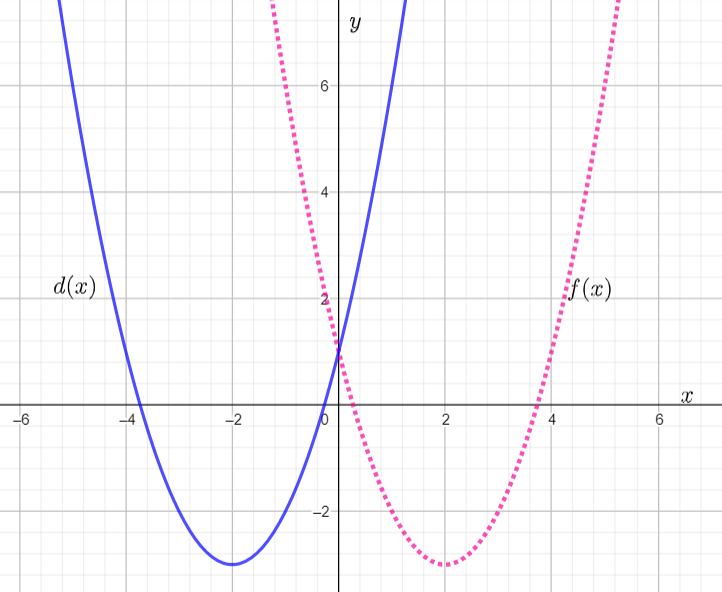
We have to sketch the graph of d(x)=f(−x).
The graph of the transformed function d(x) is the reflection of f(x) about the y−axis. Hence the graph of d(x) is
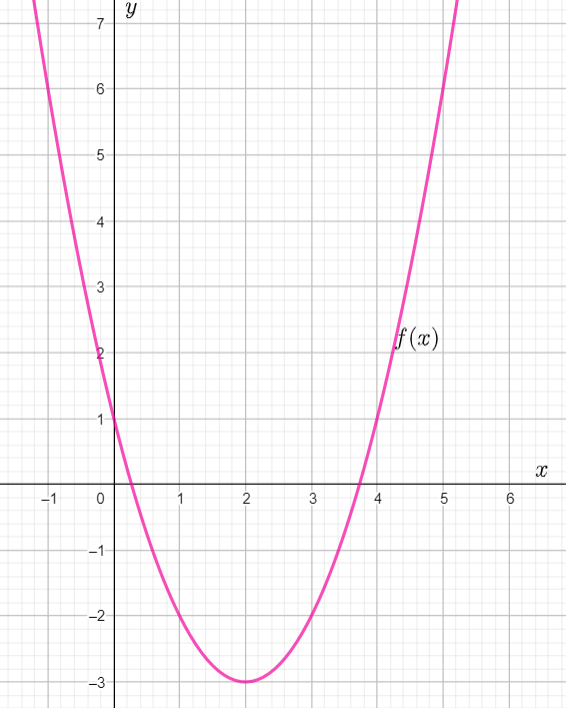
Hence we sketched the graph of d(x).
Carnegie Learning Algebra II Student Skills Practice 1st Edition Chapter 2 Exercise 2.4 Skills Practice Page 290 Problem 9 Answer
We are given the graph of f(x).
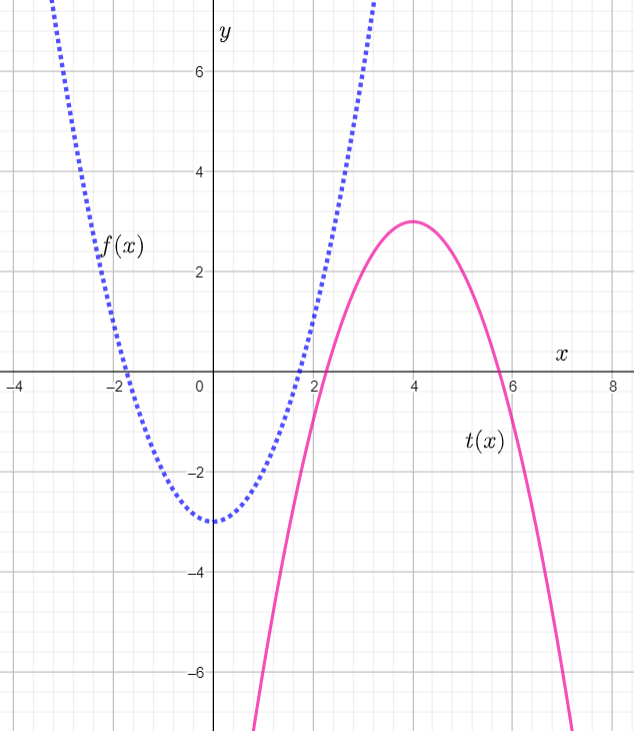
We have to sketch the graph of the transformed function t(x)=−f(x−4).
To obtain t(x) we first shift the graph of f(x) horizontally by constant 4. Since 4is positive, the graph shifts towards the right as shown below.
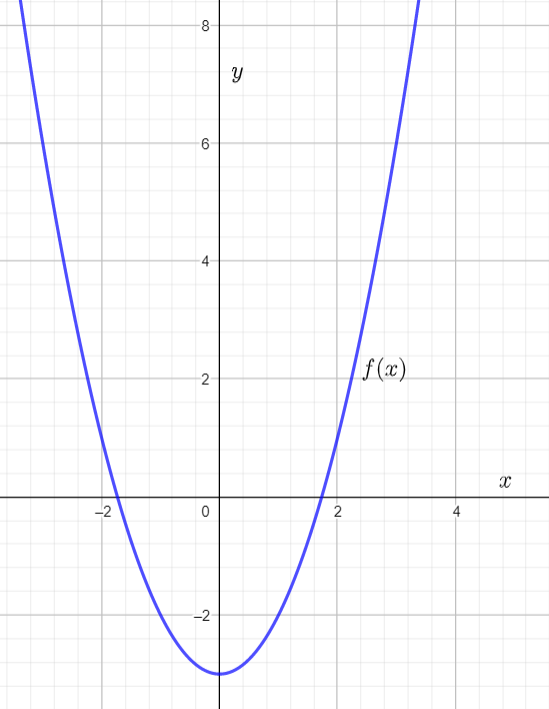
When the function f(x−4) is scaled by −1, the graph of f(x−4) reflects about the x−axis and we obtain the graph of t(x).
Hence we sketched the graph of t(x).
Page 290 Problem 10 Answer
It is given the graph of the function f(x)
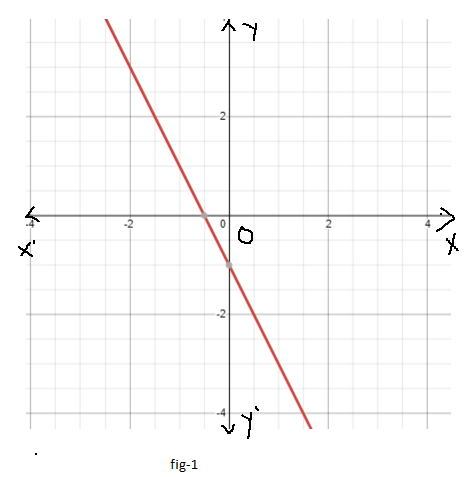
It is asked to sketch the graph of the function m(x)=−2f(x+3)+5.
To do this first find out the function f(x) by using the slope formula.
By using the function f(x) find the function m(x) and finally, sketch the function m(x).
From the given graph observe that the function f(x) passes through the point (0,0), and (1,1).
So the slope of the function will be 1−0/1−0 which is nothing but 1 .
So, the equation of the graph of the function f(x) will be f(x)=x+c.
Again the graph f(x) passes through the point (0,0).So, c=0.
So, the equation of the function f(x) will be f(x)=x.
Now find out the function m(x) by substituting x+3 instead of x in f(x).
m(x)=−2f(x+3)+5
m(x)=−2(x+3)+5
m(x)=−2x−6+5
m(x)=−2x−1
Now, sketch the graph of the function m(x)=−2x−1.
In the above graph X′OX and Y′ OY are considered as x−axis and y−axis respectively.
Hence the graph of the function m(x)=−2f(x+3)+5 is as follows:
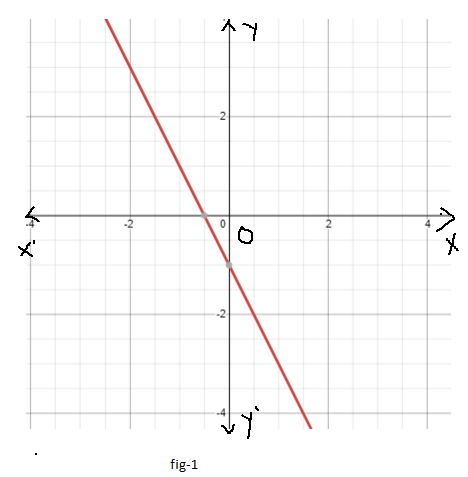
Chapter 2 Exercise 2.4 Carnegie Learning Algebra II key
Carnegie Learning Algebra II Student Skills Practice 1st Edition Chapter 2 Exercise 2.4 Skills Practice Page 290 Problem 11 Answer
It is given a graph of a function. It is asked to find the graph of the function g(x)=f(−x+1)−4.
To find the graph of the function g(x) first, move down the graph of the function y=f(x) 4units.
Then take the reflection of the resulting graph with respect toy−axis .
Then shift the graph one unit to the left.
We have a graph of a function y=f(x).
Since we are interested to find the graph of the function g(x)=f(−x+1)−4, so first shift down the graph 4units.
Then the resultant graph will be as follows:
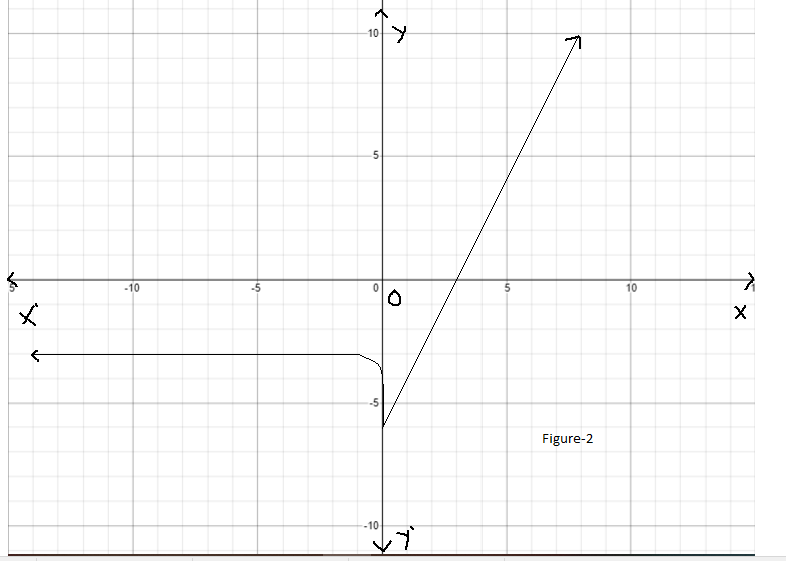
Now, take the reflection of the resultant graph with respect to the y−axis.
Then the resultant graph will be as follows:
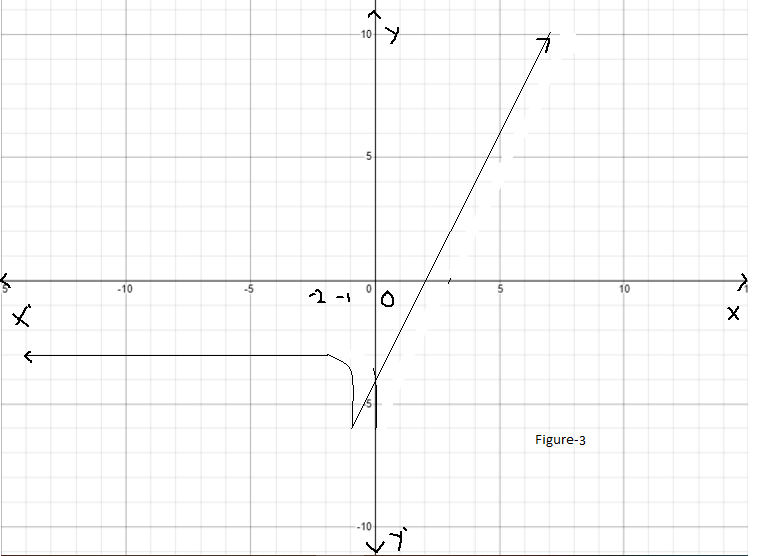
Finally shift the resultant graph one unit left to the present position:
Then the resultant graph will be:
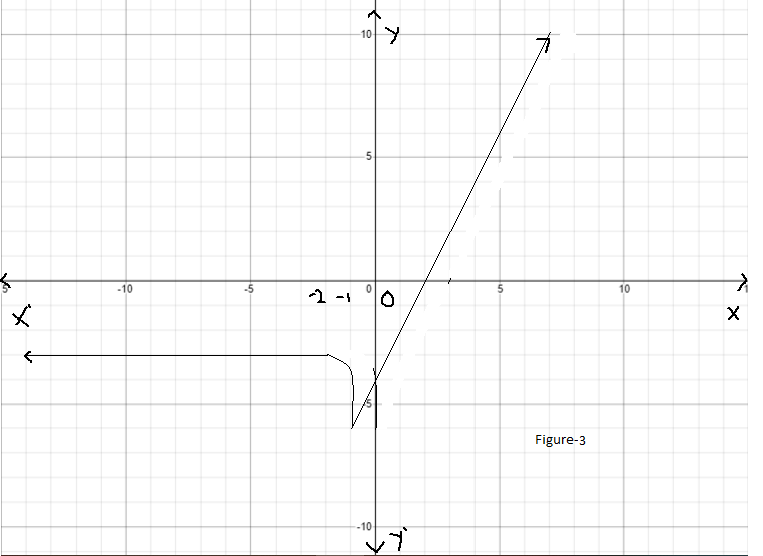
So, the graph of the function g(x)=f(−x+1)−4 will be as follows:
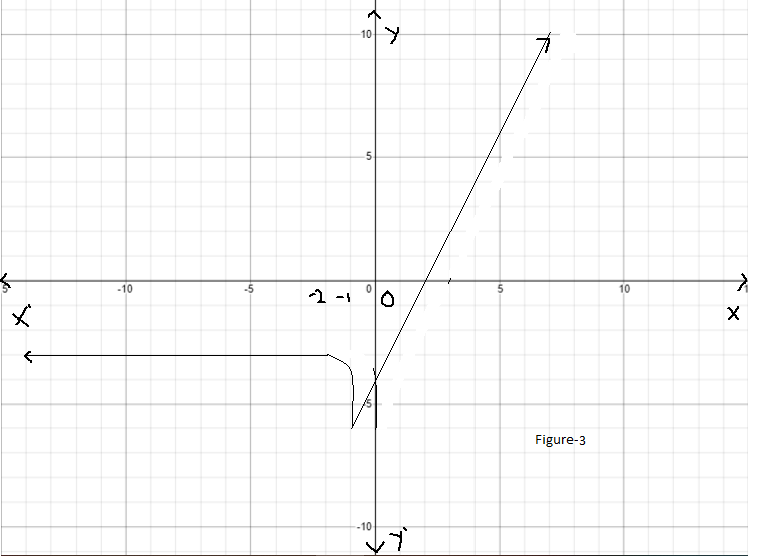
Hence, the graph of the function g(x)=f(−x+1)−4 is as follows:
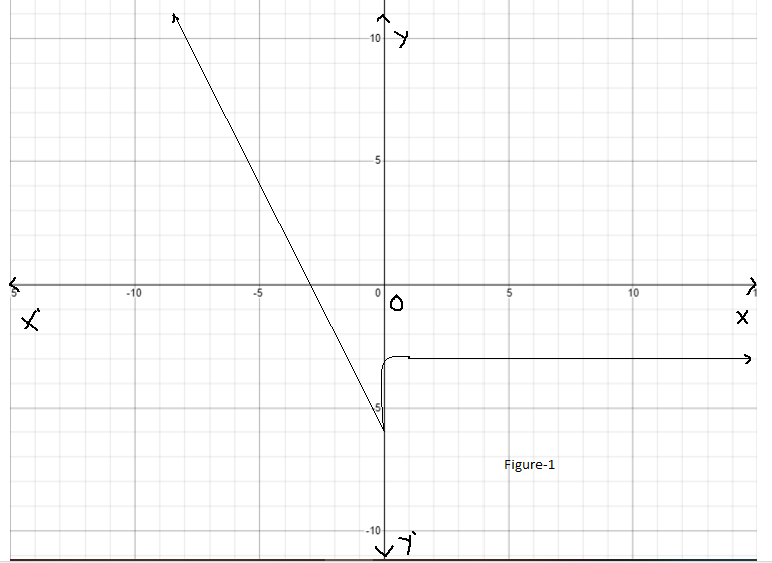
Page 291 Problem 12 Answer
It is given a graph of a parabolic function y=f(x) whose vertex is at (−3,0) and the parabola passes through the point(−5,−4).
It is asked to find the graph of the transformed function r(x)=f(x/2+1)+2.
To find the transformed function first, find the explicit function of the parabola.
Then substitute x/2+1 instead of x and add 2.
Observe that in the given graph the parabola passes through the point (−5,4) and the vertex of the parabola is at (−3,0).
Now, we know that the general equation of the parabola having an axis parallel to negative y−axis is(x−α)2=−4ay .
So, the equation of the given parabola will be (x+3)2=−4ay.
Also, this parabola passes through the point (−5,−4).
So, (−5+3)2=−4a(−4)
So, a=4/16 and therefore a=1/4.
So, the equation of the parabola will be (x+3)2=−y.
So, f(x)=−(x+3)2
Now, to find the function r(x)=f(x/2+1)+2, substitute x/2+1 instead of x in the following way:
r(x)=f(x/2+1)+2
=−(x/2+1+3)2+2
=−(x/2+4)2+2
=−1/4(x+8)2+2
So, the graph of the transformed function r(x) is as follows:
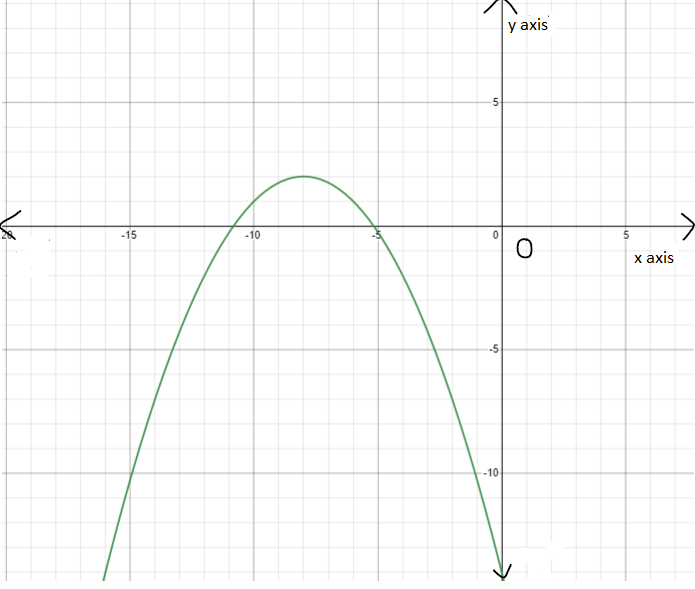
Hence, the graph of the transformed function r(x) is as follows:
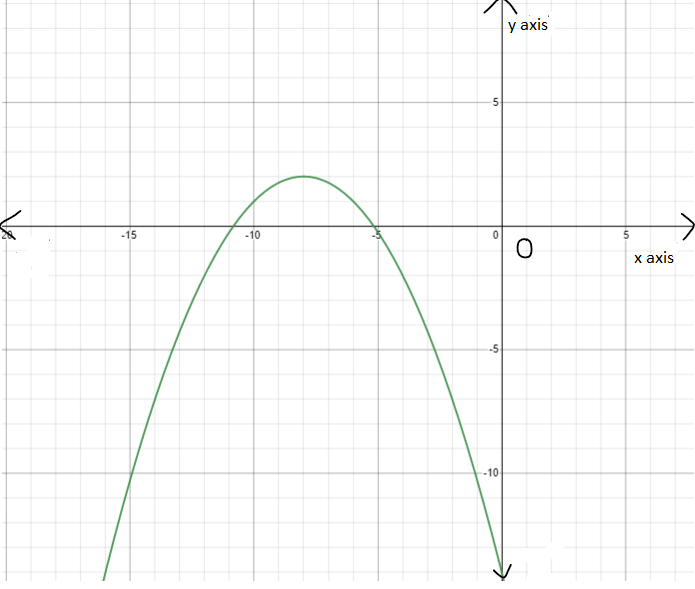
How to solve Chapter 2 Exercise 2.4 Algebra II Carnegie Learning
Carnegie Learning Algebra II Student Skills Practice 1st Edition Chapter 2 Exercise 2.4 Skills Practice Page 291 Problem 13 Answer
It is given a graph of a function f(x) and it is asked to find the graph of a function p(x)=−f(x+1)−3 .
First, find the coordinates of all the points.
Then shift down the graph 3 units. Next, shift the graph to left at 1 unit an f finally take a reflection about x axis.
We are interested to find the graph of p(x)=−f(x+1)−3.
First shift down the graph 3 units and then the resulting graph will be as follows:
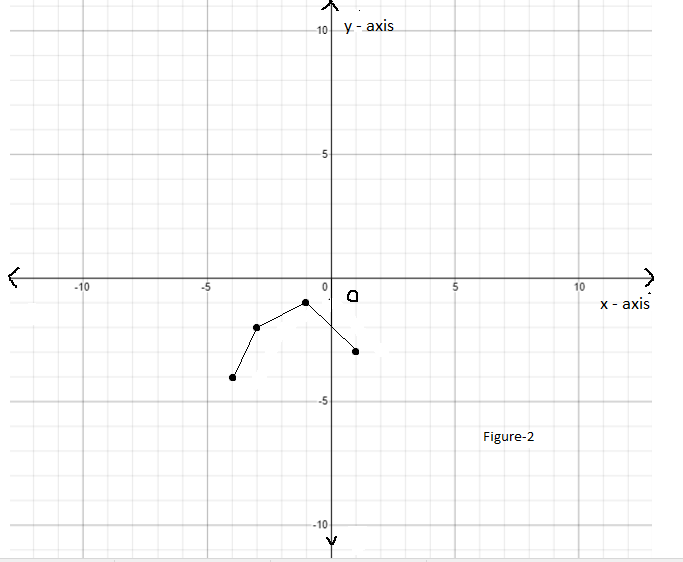
Next, shift the resulting graph to the left at 1 unit and then the resulting graph will be as follows:
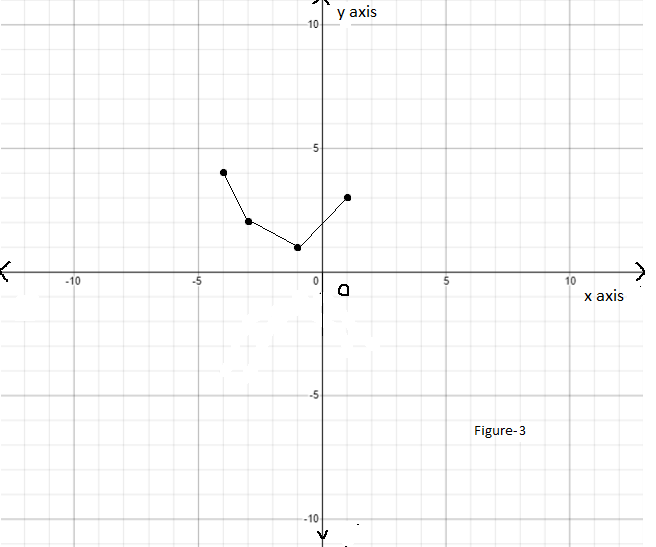
Finally, take the reflection of the resulting graph with respect to x-axis
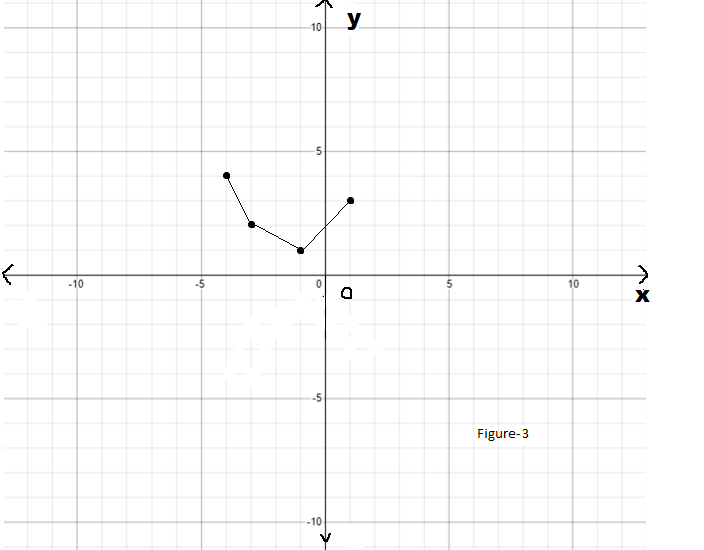
So, the graph of the function will be as follows:
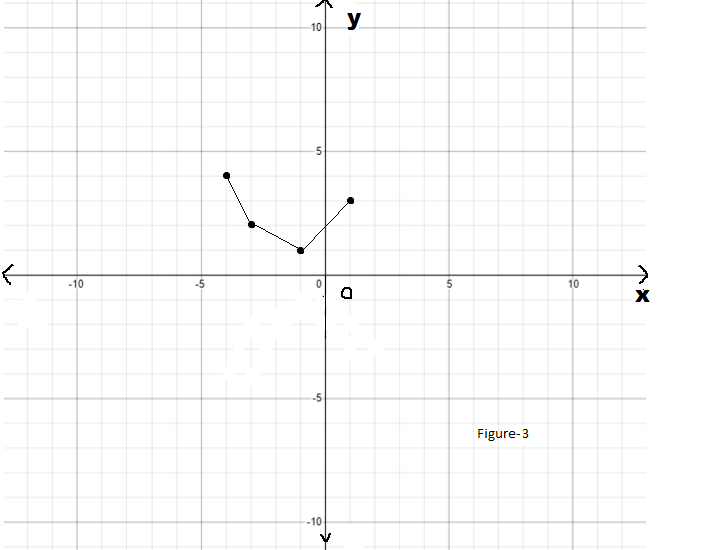
Hence, the required graph of the function p(x)=−f(x+1)−3 will be as follows:
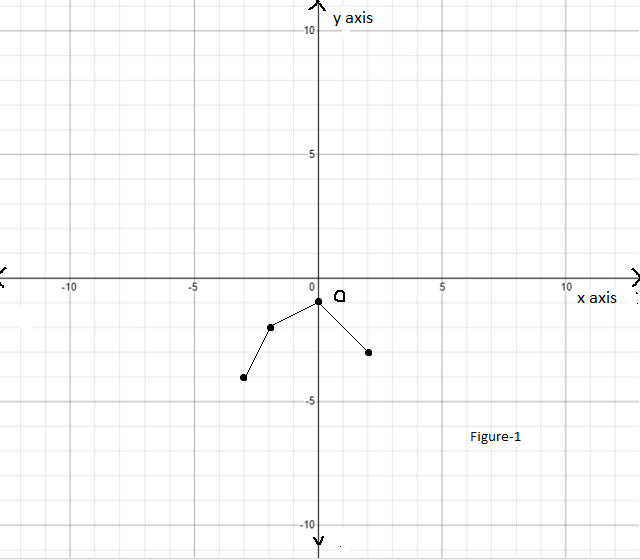
Page 291 Problem 14 Answer
It is given two parabolas w(x) and v(x) and w(x) is transformed to v(x).
It is asked to find the equation of w(x) in terms of v(x).
To do this apply the transformation to the function v(x) to get the function w(x).
First, observe that the vertex of the parabola given by the function w(x) is (0,3) and the vertex of the parabola v(x) is (5,5).
So, first, move the parabola given by the function v(x) to the left side of 5 units. So, the resulting parabola is v(x+5).
Next, drag the resulting parabola vertically downward of 2 units. So the resulting parabola will be v(x+5)−2.
Now, invert the resulting parabola. So, the final equation of the parabola will be −(v(x+5)−2) and this is nothing but the parabola given by the function w(x).
So, w(x)=−(v(x+5)−2)
Hence the equation of the parabola given by the function w(x) in terms of v(x) is w(x)=−(v(x+5)−2)
Page 292 Problem 15 Answer
It is given the graph of the equation of the straight line y=x by w(x) and the graph of the equation y=−x+3 by v(x).
It is asked to write the function w(x) in terms of the function v(x).
To do this apply the transformations to the function v(x) to get the function w(x).
The function v(x) is the straight line passing through the origin.
Take the reflection of the function v(x) with respect to x−axis and then the resulting function will be −v(x).
Then move the resulting function upward at 3 units.
So, the resulting function will be −v(x)+3 and this function is nothing but the function w(x).
So, the function w(x) an be written as w(x)−v(x)+3.
Hence the function w(x) can be written in terms of the function v(x) as w(x)=−v(x)+3.
Algebra II Carnegie Learning skills practice solutions
Carnegie Learning Algebra II Student Skills Practice 1st Edition Chapter 2 Exercise 2.4 Skills Practice Page 292 Problem 16 Answer
It is given a graph of the parabola whose axis is parallel to negative y−axis and vertex is at (−4,6) by the function v(x) and a parabola whose axis is parallel to negative y−axis and vertex is at(4,−4)
by the function w(x).It is asked to find an equation of w(x) in terms of v(x).
To do this apply the transformation to the function v(x) to get the function w(x).
First, move down the parabola given by the function v(x) by 10 units.
Then the resulting function will be v(x)−10.
Then move the resulting function at the right side 8 units.
Then the resulting function will be v(x−8)−10 and this is nothing but the function given by w(x)
Hence, the equation for w(x) in terms of v(x) is w(x)=v(x−8)−10.
Page 292 Problem 17 Answer
It is given the graphs of the two functions w(x) and v(x).
It is asked to write the equation for the function w(x) in terms of the function v(x).
To do this first, apply the transformation to the function v(x) and then get the function w(x).
First, move the function v(x) to the right side by 3units.
So, the resulting graph of the function will be v(x−8).
Now, take the reflection with respect to y−axis of the resulting graph of the function.
Then the resulting graph of the function will be v(−(x−8)) and this is nothing but the function w(x).
Hence, the equation of the function w(x) in terms of v(x) will be w(x)=v(−x+8).
